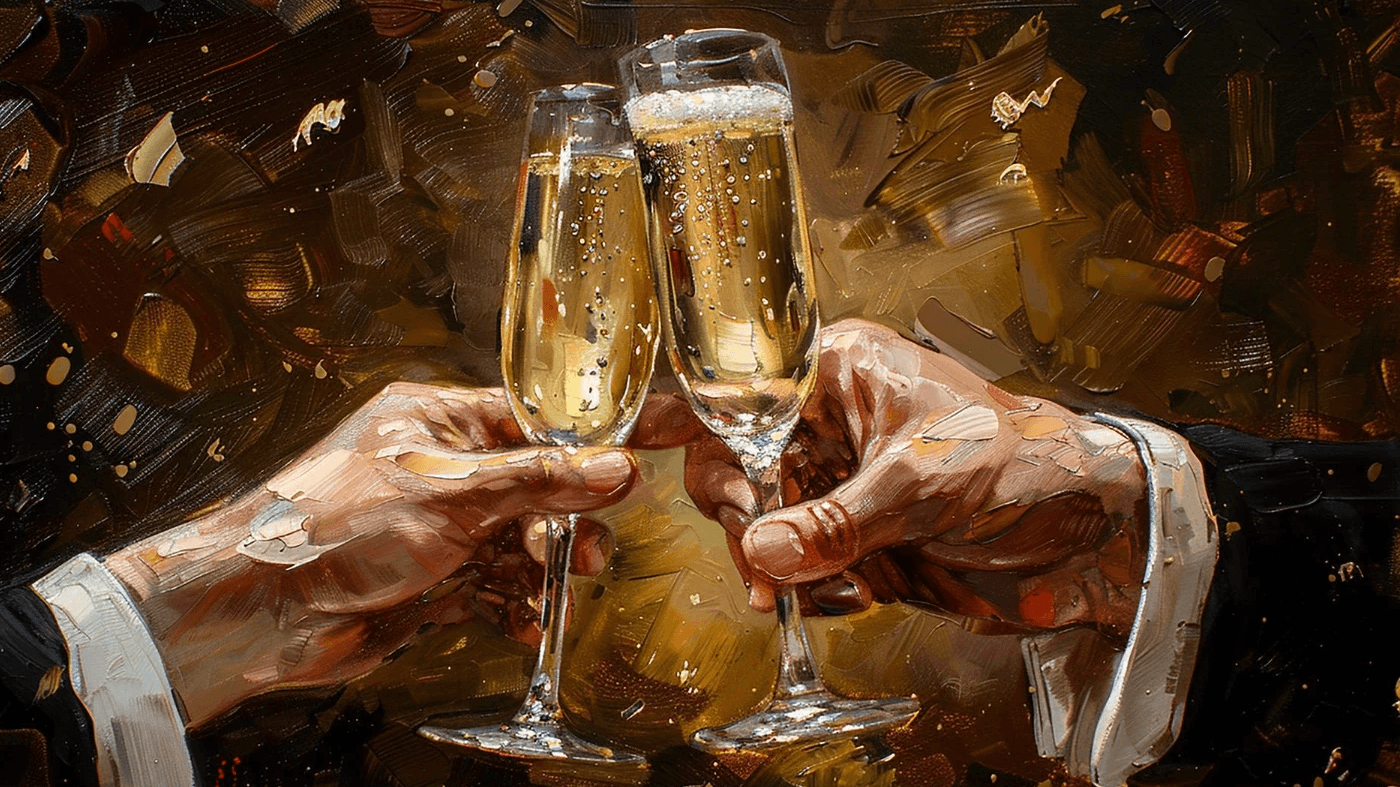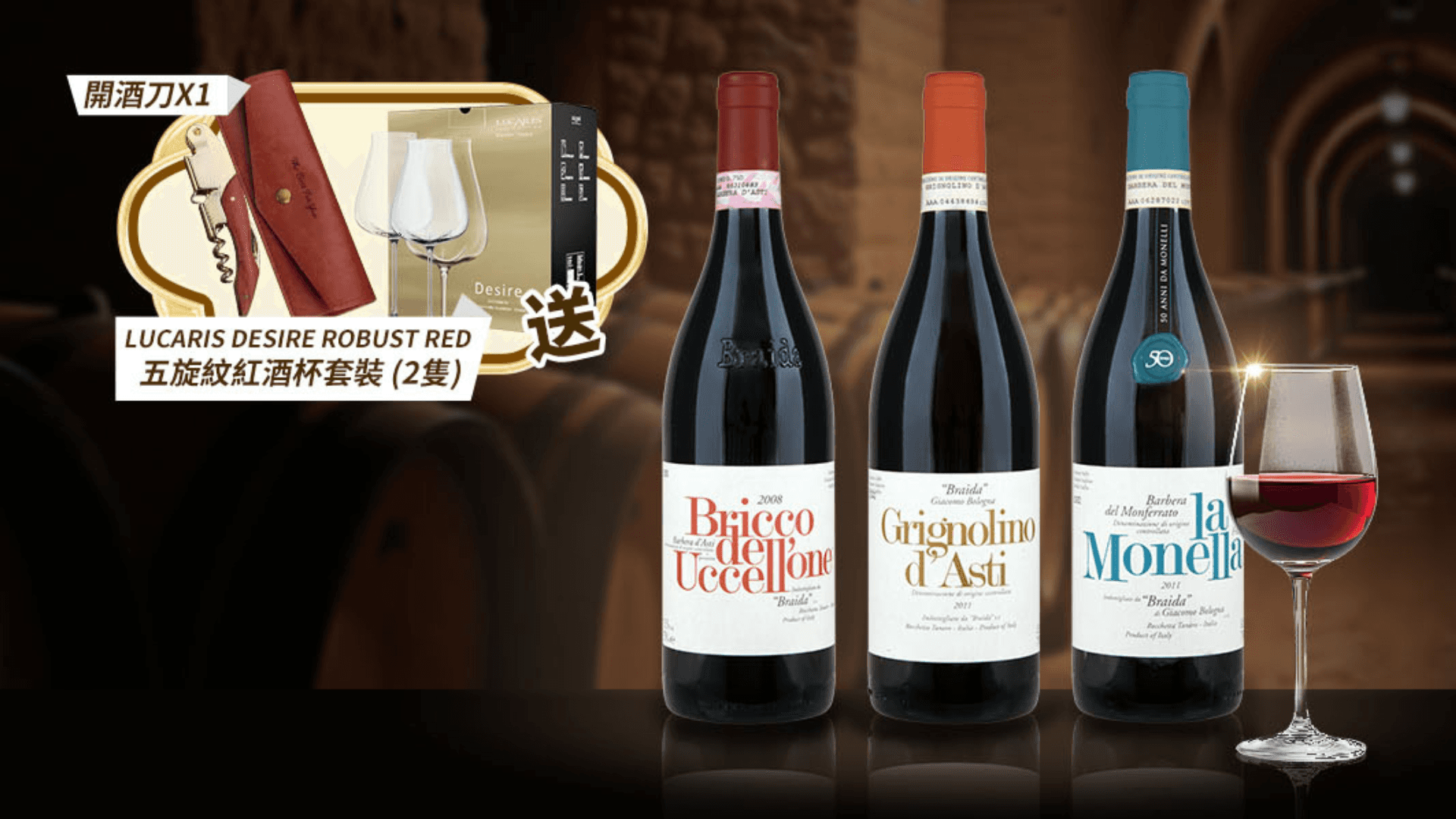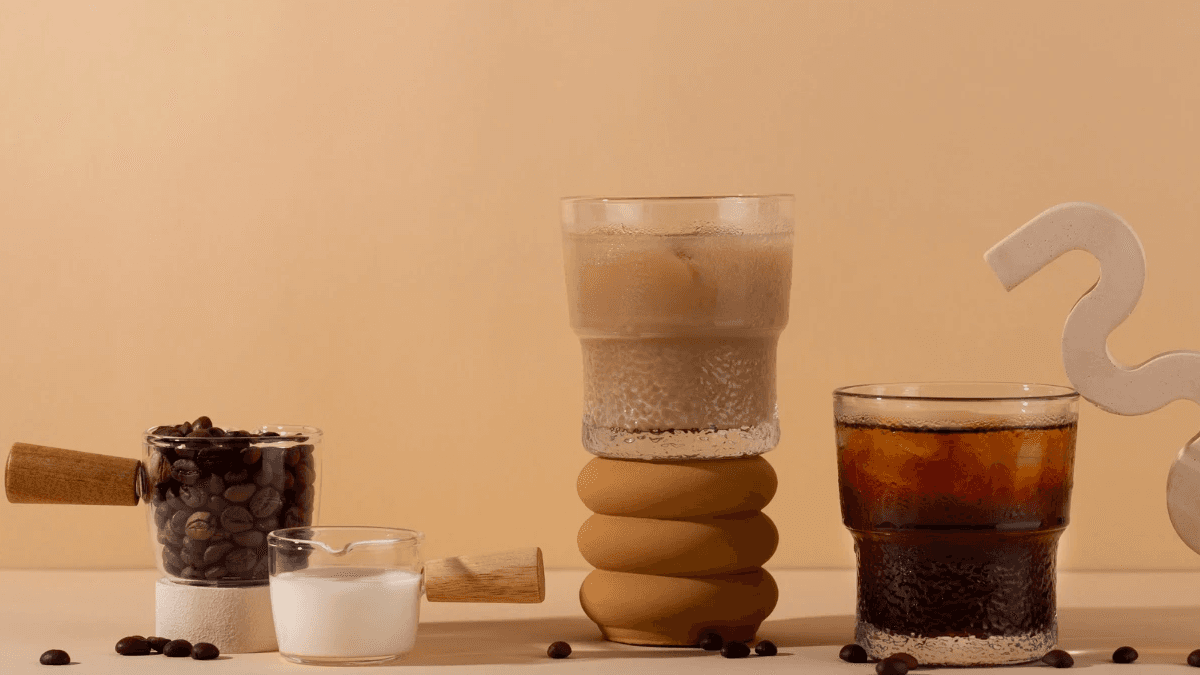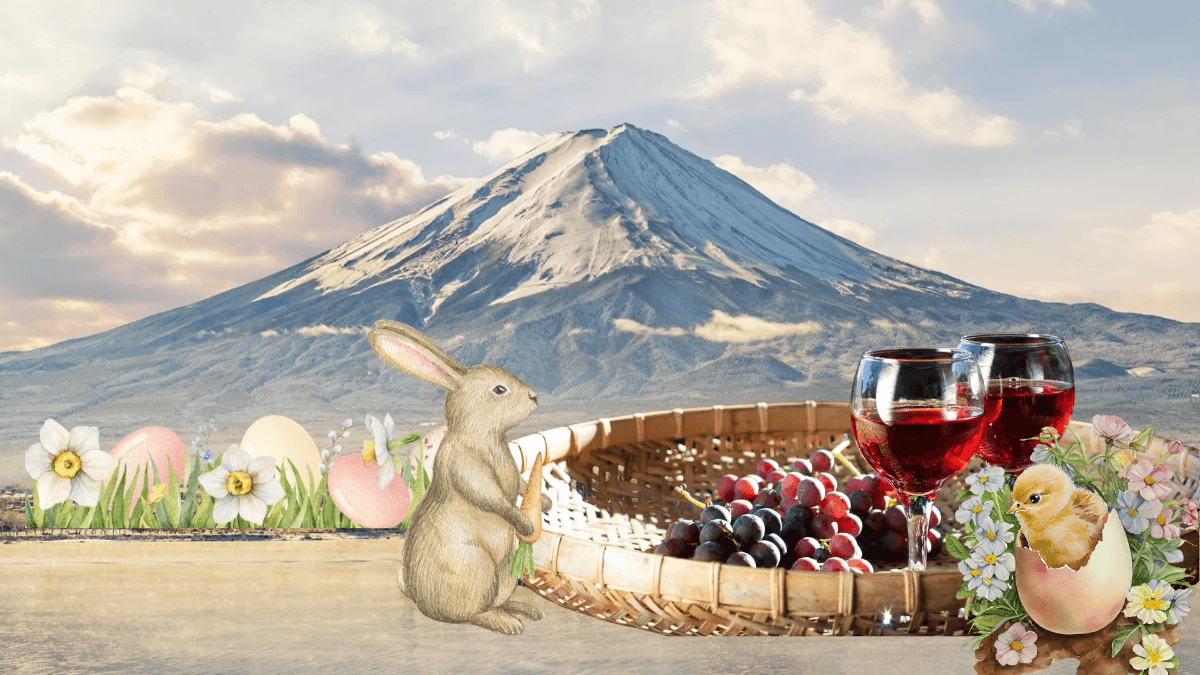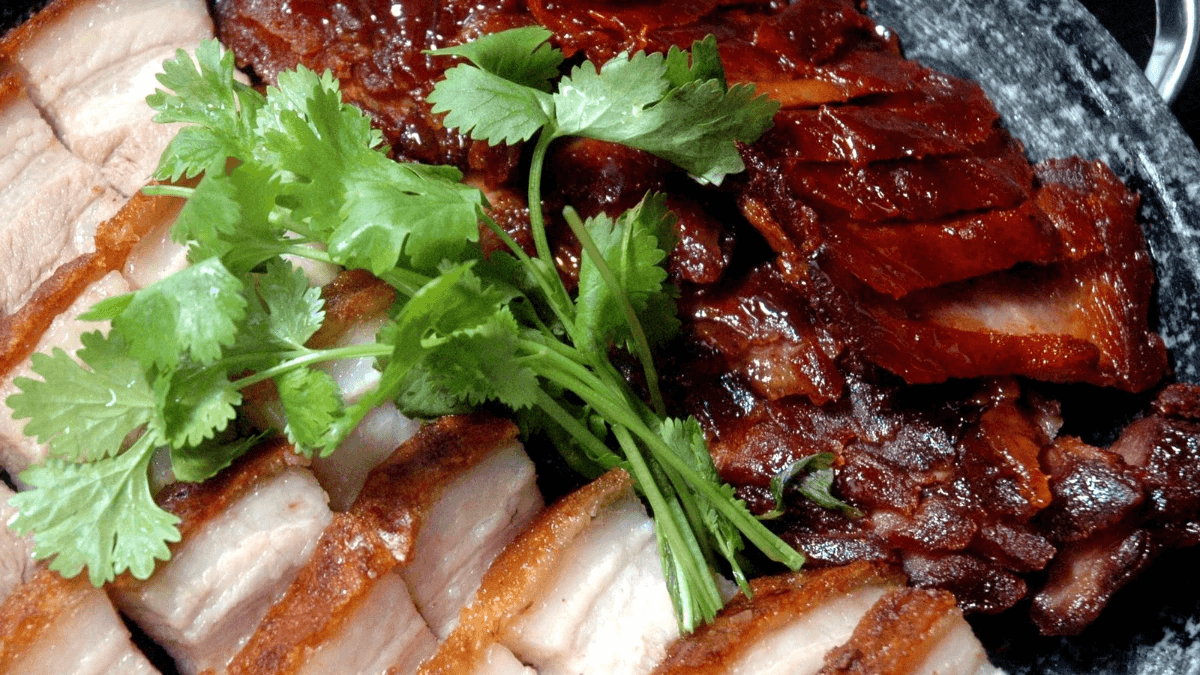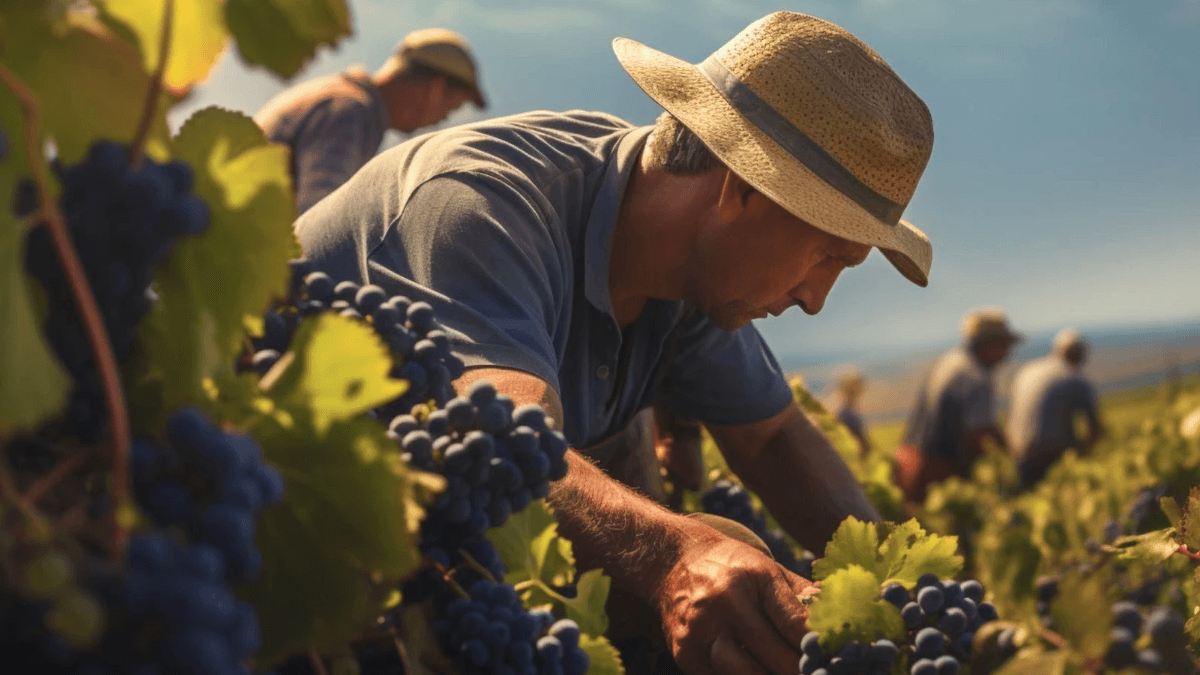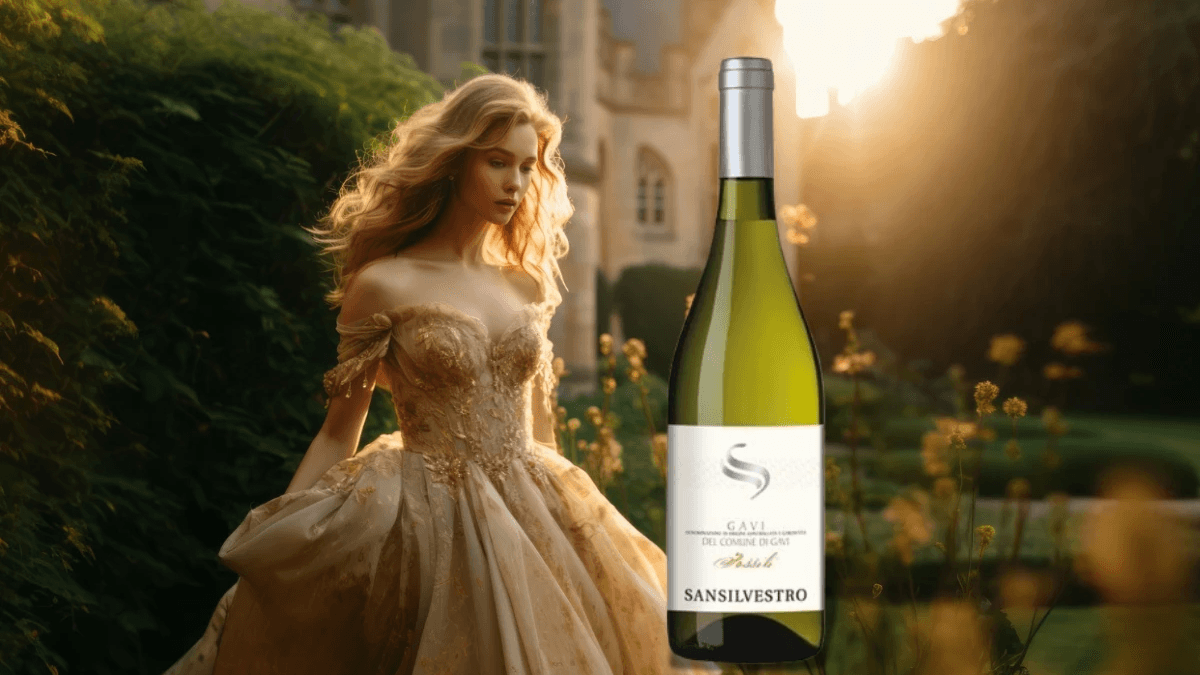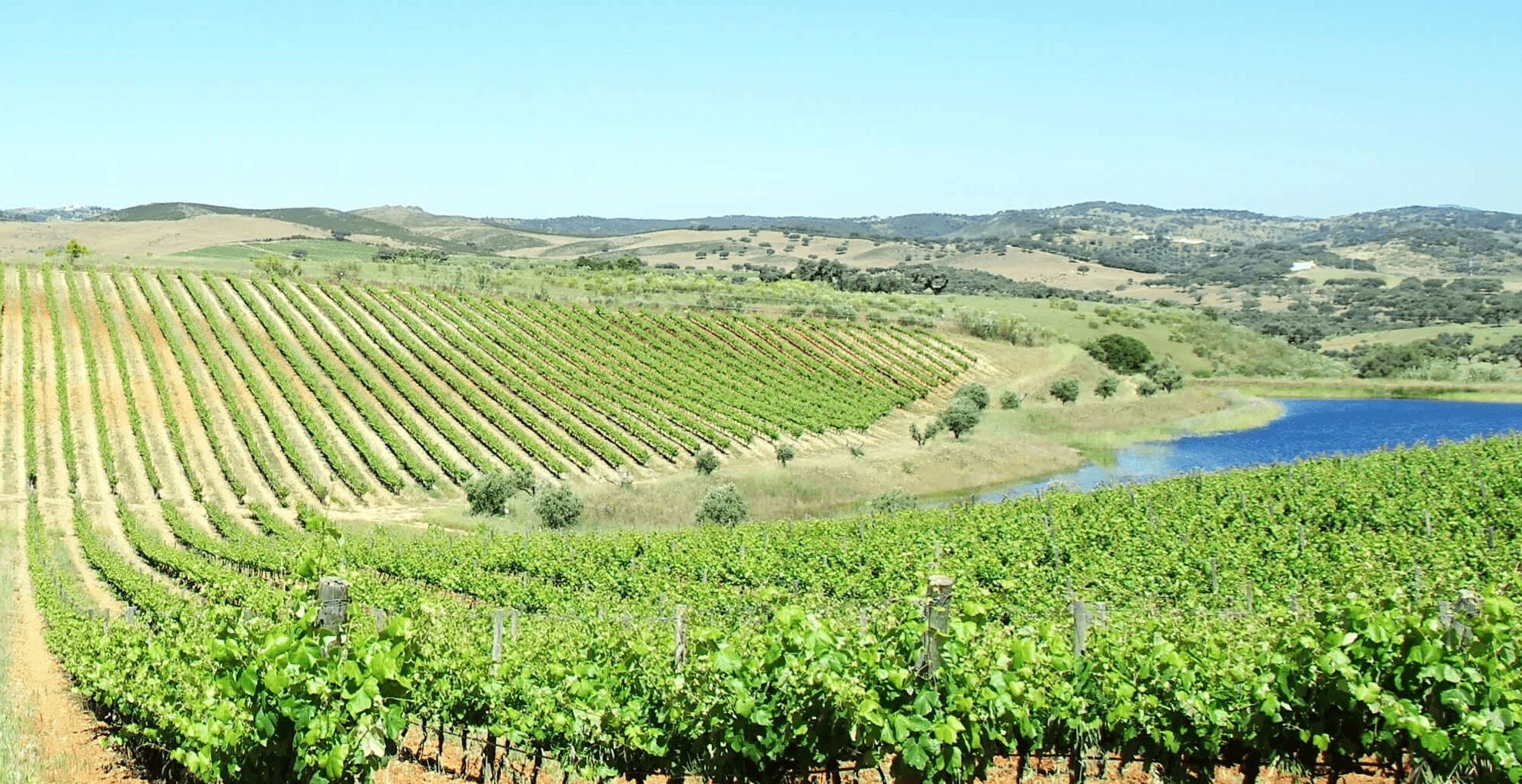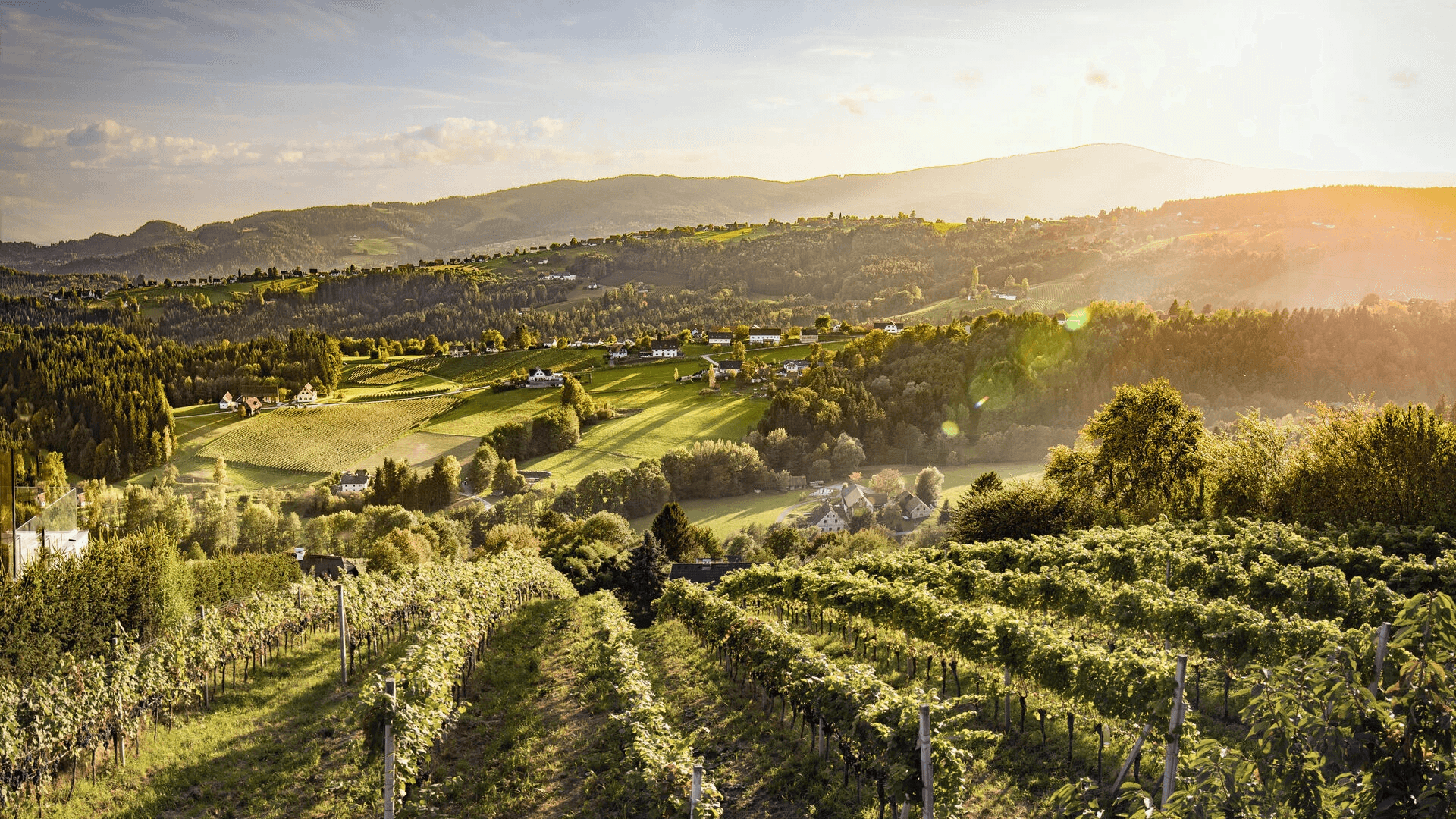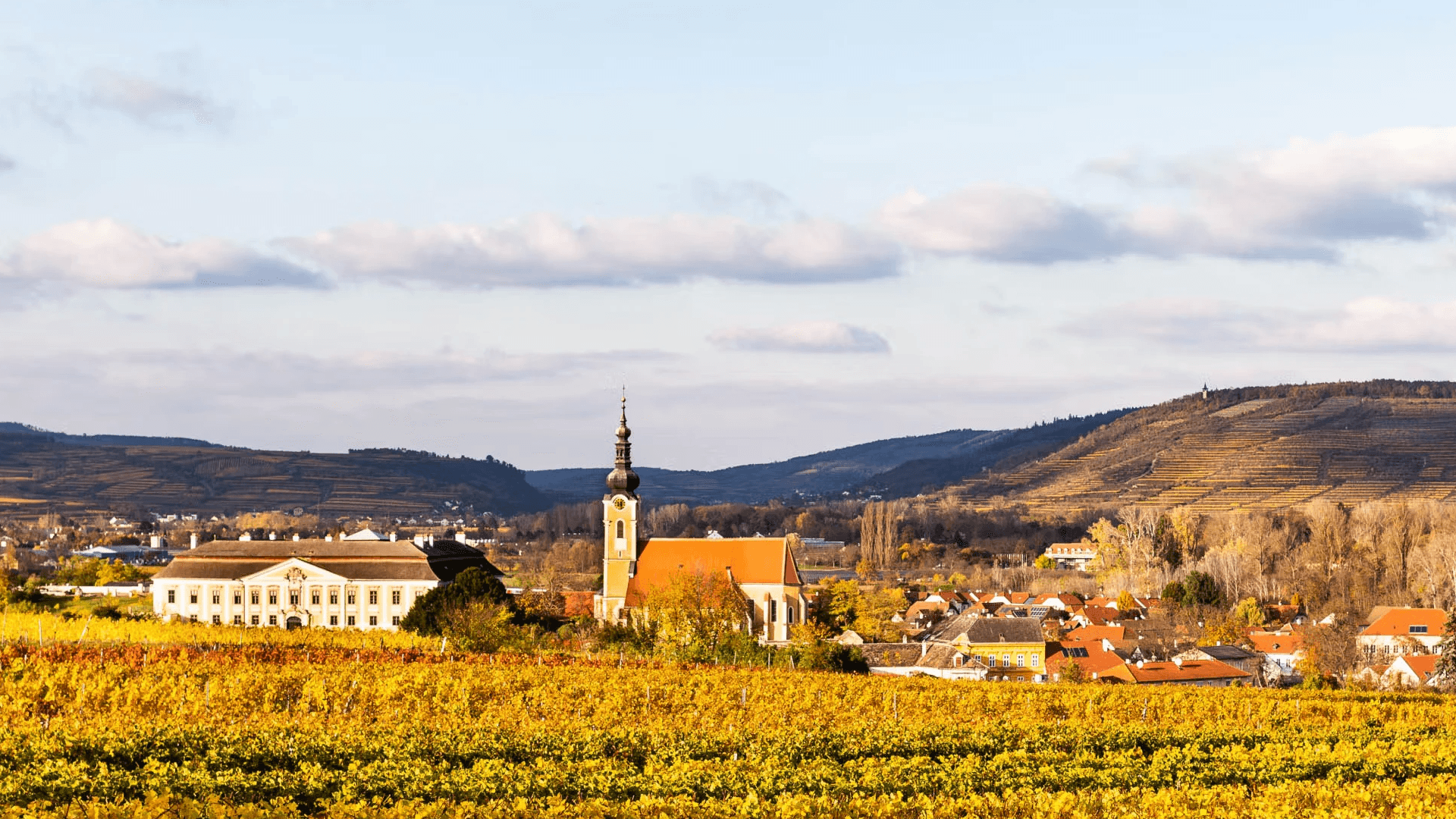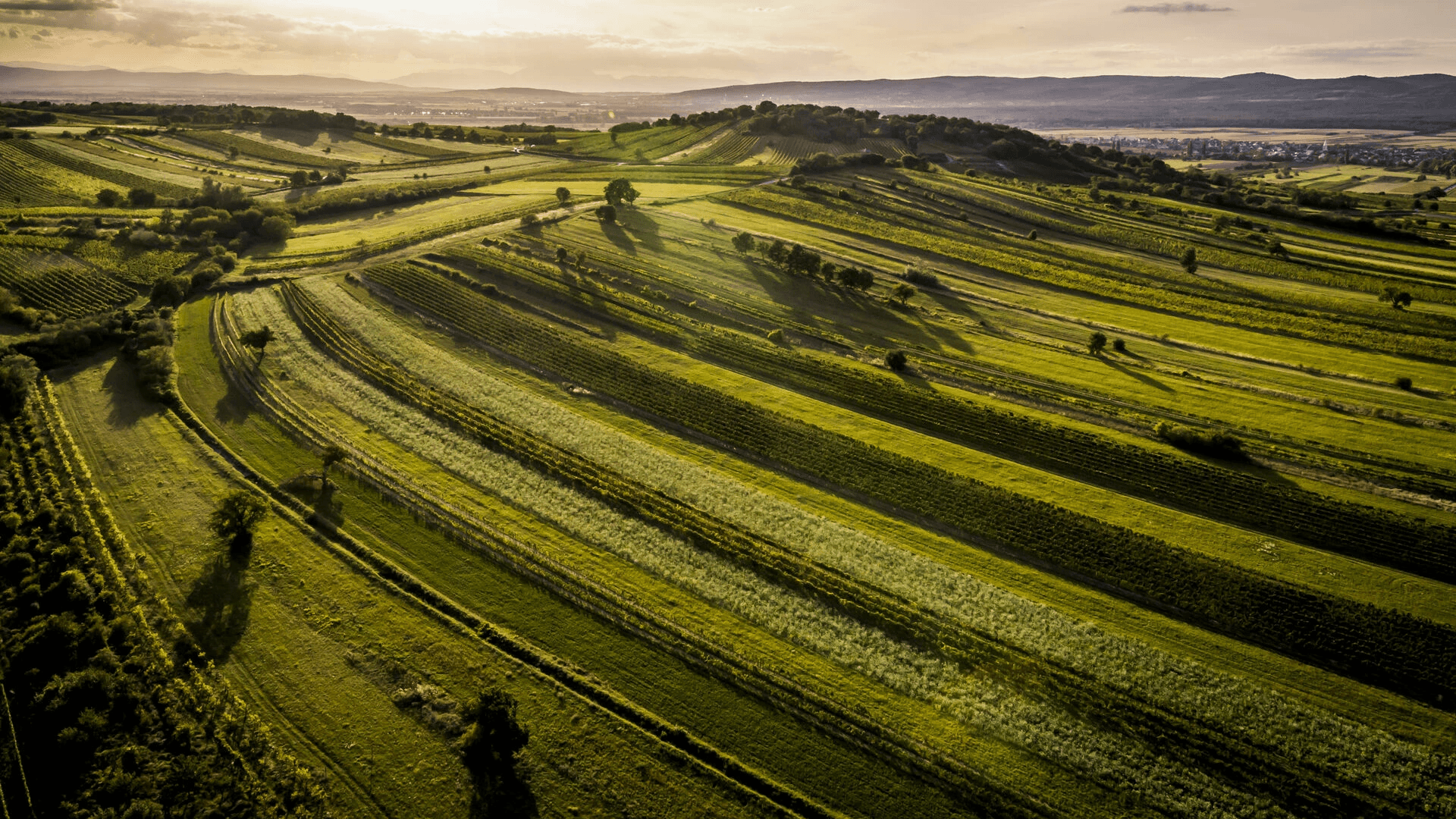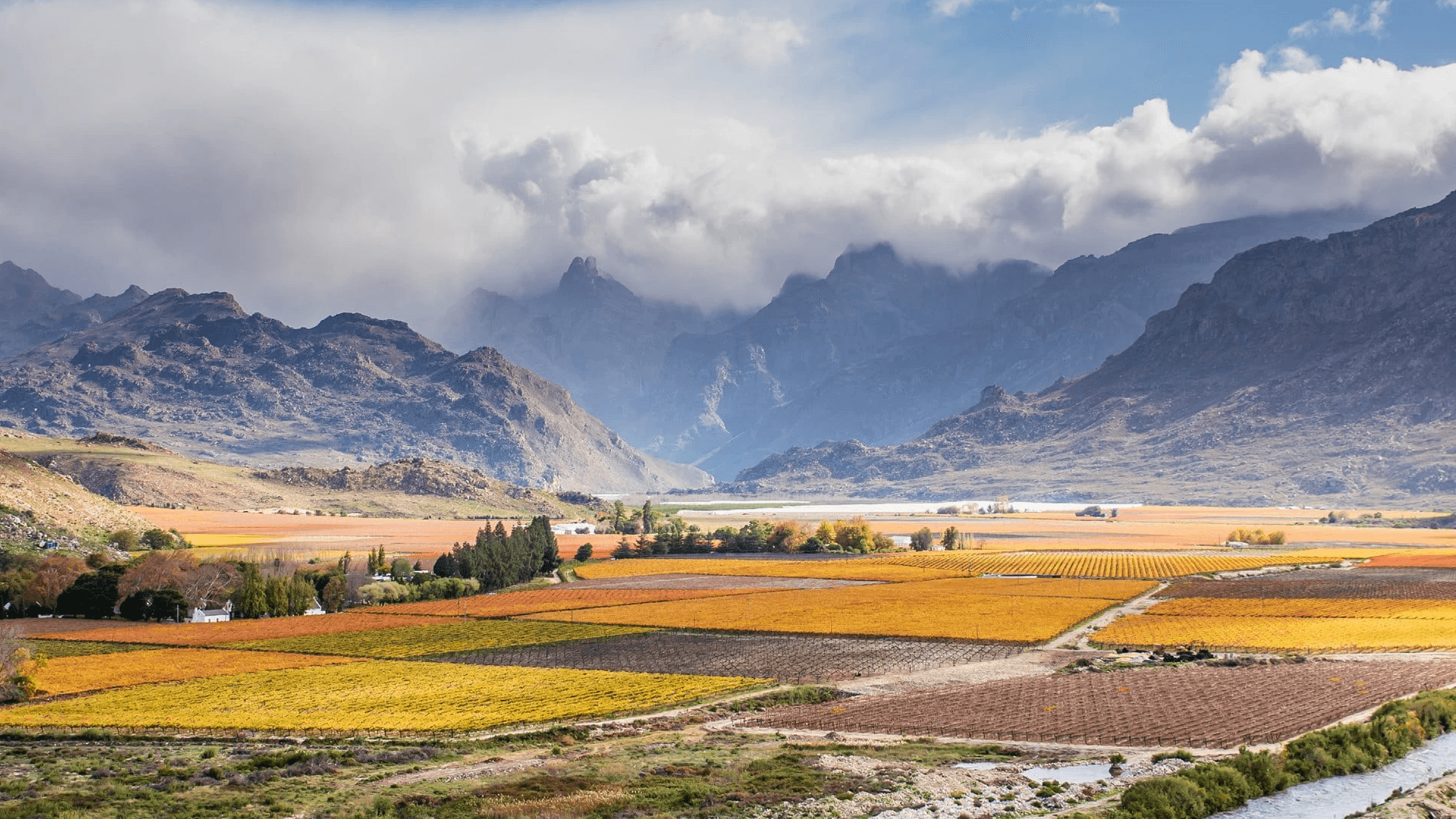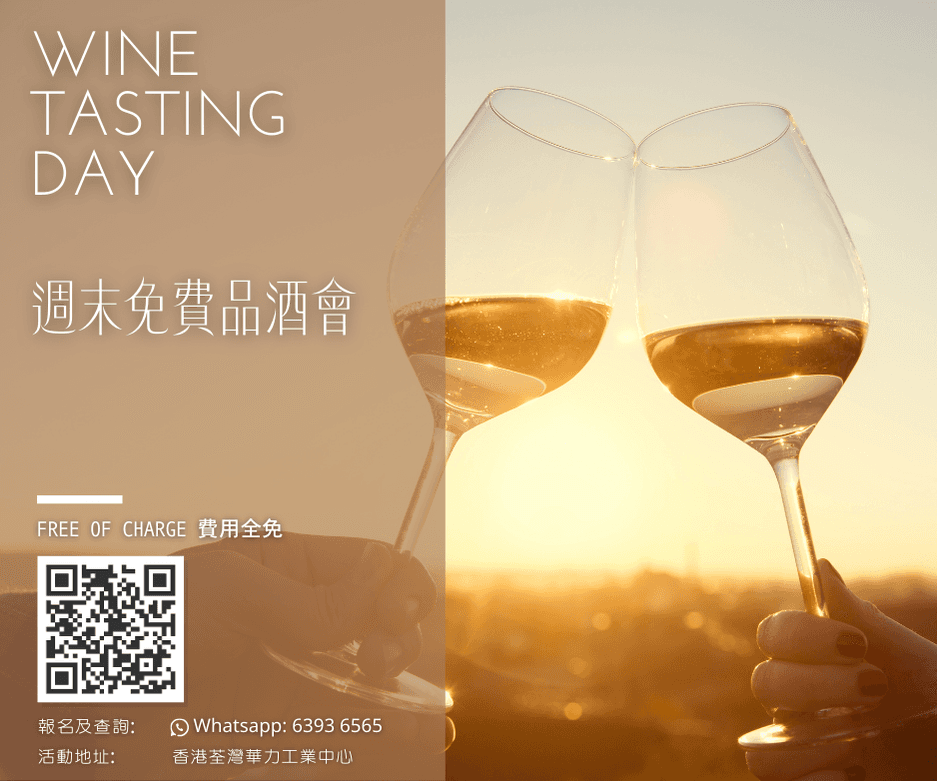父親節禮物推介|品味與心意兼備的紅酒套裝及多元選擇
Elegance Under High Temperatures: The Story and Investment Value of Aged Champagne
Explore the history and investment value of Champagne, and understand the difference between vintage and non-vintage Champagne and their unique flavors. Vintage Champagne is made from grapes harvested in a single year and is produced only when the quality of the grapes from that year is exceptional. Non-vintage Champagne, on the other hand, is a blend of wines from multiple years, aimed at maintaining a consistent style for the brand and ensuring product quality.
The History and Origins of Champagne
Champagne, as a representative of sparkling wine, has a history that dates back to the late 17th century in the Champagne region of France. The monk Dom Pierre Pérignon is regarded as one of the founders of champagne production techniques. He dedicated himself to improving wine quality and discovered that blending different grape varieties could create a more balanced wine. With advancements in glass bottle manufacturing and the introduction of corks, bubbles were preserved in the bottle, and champagne gradually became a symbol of the nobility and high society.
In 1810, Veuve Clicquot launched the first vintage champagne, opening a new chapter in the champagne industry. Vintage champagne is only produced in years when grape quality is exceptional, requiring at least three years of bottle aging to enhance its rich, layered flavors. This winemaking method has made vintage champagne a symbol of luxury and quality.
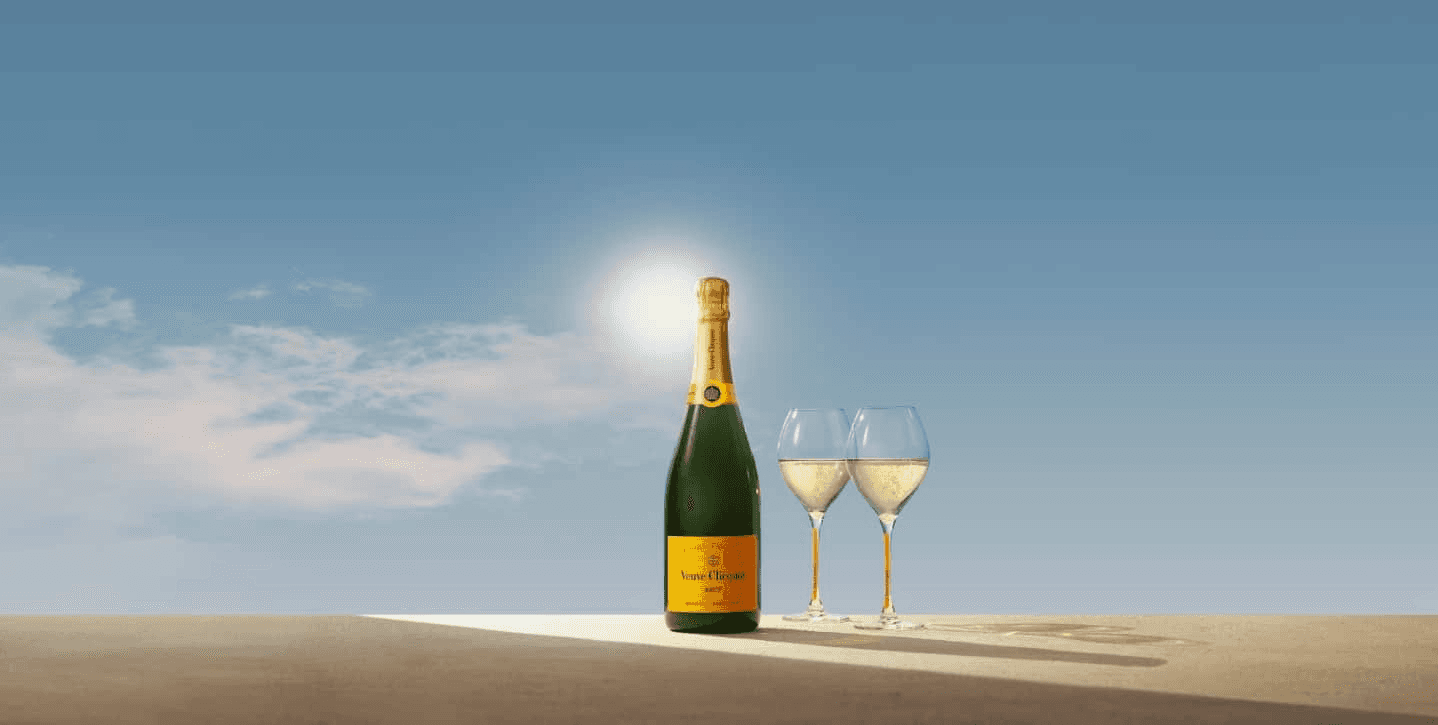
Credit: My French Country Home Magazine
As one of the most famous sparkling wines in the world, champagne is divided into vintage champagne (Vintage Champagne) and non-vintage champagne (Non-Vintage Champagne, NV). These two types have significant differences in production methods, flavor characteristics, rarity, and pricing. The following will detail their differences.
Production Methods and Aging Time
Vintage champagne is made from grapes harvested from a single year and is produced only when the grape quality is exceptional that year, representing the essence of that year’s harvest. According to regulatory requirements, vintage champagne must be aged for at least three years, but many top brands like Krug and Cristal choose to extend aging time to five to ten years to enhance the complexity and depth of the wine.
Non-vintage champagne, on the other hand, is made from a blend of wines from multiple years, aimed at maintaining a stable brand style, ensuring consistent product quality even in years with less than ideal climate conditions. Non-vintage champagne requires only 15 months of aging, with at least 12 months spent maturing on yeast lees.
Flavor Characteristics
Due to longer aging times, vintage champagne exhibits richer and more complex flavors, including characteristics of nuts, toasted bread, cream, and honey, while the bubbles are more delicate. Over time, its oxidation brings deeper baked fruit and caramel flavors.
In contrast, non-vintage champagne typically focuses more on fresh fruit flavors such as apple, citrus, and berries, with a refreshing palate and distinct acidity, making it more suitable for everyday drinking or as an aperitif.
Rarity and Price
Vintage champagne is considered a rare delicacy as it is produced only in specific years and in limited quantities, with prices generally higher than those of non-vintage champagne. For example, some well-known brands such as Dom Pérignon and Louis Roederer Cristal only produce vintage champagne, and their market value continues to grow over time.
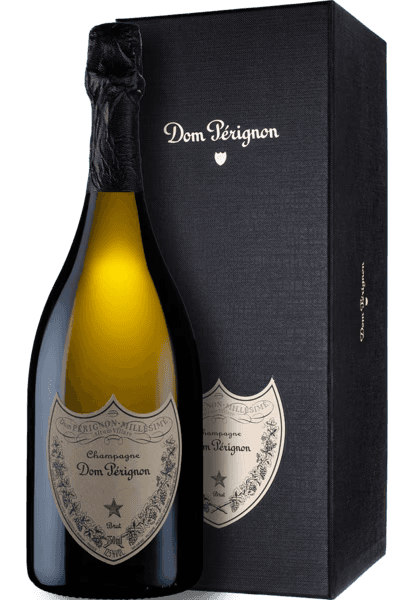
Dom Pérignon Champagne
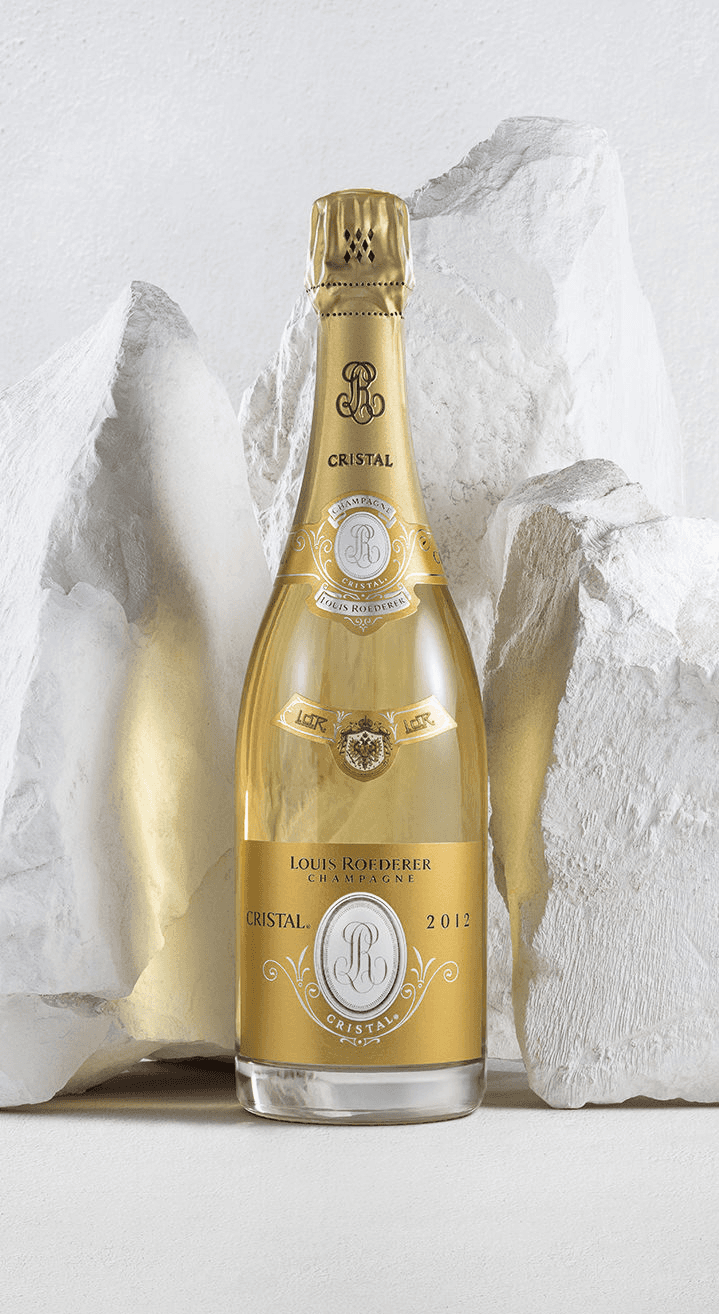
Louis Roederer Cristal Champagne
Non-vintage champagne, due to its large production scale and stable supply, is relatively affordable and is the mainstay of the mass market.
Introduction to Exceptional Years
Vintage champagne displays unique flavors depending on the climate conditions of each year. Here are some recognized exceptional years and their characteristics:
1988: Grapes matured slowly, giving the champagne a delicate and complex palate with an elegant texture. Recommended brands include Ruinart Dom Ruinart and Pol Roger Cuvée Sir Winston Churchill.
1996: This year saw excellent grape maturity, producing champagne with a rich palate and balanced acidity and sweetness. Billecart-Salmon Clos Saint Hilaire is a classic choice from this vintage.
2002: Known as the 'perfect vintage', the grapes were balanced in quality, resulting in champagne with an exquisite structure and longevity. Recommended brands include Louis Roederer Cristal and Dom Pérignon.
2008: Cool nights created grapes with excellent acidity, resulting in champagne that is both elegant and powerful. Taittinger Comtes de Champagne is a representative masterpiece from this vintage.
2012: This year's stable climate produced grapes with high maturity and balanced acidity, resulting in champagne with significant aging potential. Dom Pérignon Vintage 2012 is the standout product from this vintage.
2015: Grapes ripened well under hot conditions, resulting in champagne that exhibits rich fruit flavors and an elegant structure. Canard Duchene Champagne Vintage 2015 is praised as 'elegance under heat', making it an outstanding creation.
These exceptional years not only reflect the influence of natural conditions on the art of winemaking but also provide collectors with a basis for selection.
Champagne, as a representative of sparkling wine, has a history that can be traced back to the late 17th century in the Champagne region of France. The monk Dom Pierre Pérignon is regarded as one of the founders of the champagne-making technique. He dedicated himself to improving the quality of wine and discovered that blending different grape varieties could create a more balanced wine. With the advancement of glass bottle manufacturing technology and the introduction of corks, the bubbles could be retained in the bottle, and Champagne gradually became a symbol of nobility and high society.
Investment Value of Vintage Champagne
Scarcity and High Demand
Vintage champagne is produced only under specific conditions, resulting in a relatively limited quantity, coupled with strong consumer demand for premium champagne, which drives prices upward. In a luxury market like Hong Kong, vintage champagne is highly sought after due to its scarcity.
Stable Returns
According to the Liv-ex Champagne 50 index, the prices of investment-grade champagne have seen significant growth in recent years. For example, in 2021, the index rose by 40%. Compared to other investment options like Bordeaux or Burgundy wines, vintage champagne offers a more stable and relatively affordable investment opportunity. Additionally, Henri Giraud Argonne series has performed particularly well, with average returns of 126% for the vintages of 2008, 2011, and 2012 over the past five years, equivalent to an annual growth rate of 17.7%. Meanwhile, the average price of the 2012 vintage increased by 54.8%, demonstrating strong market potential and collectible value.
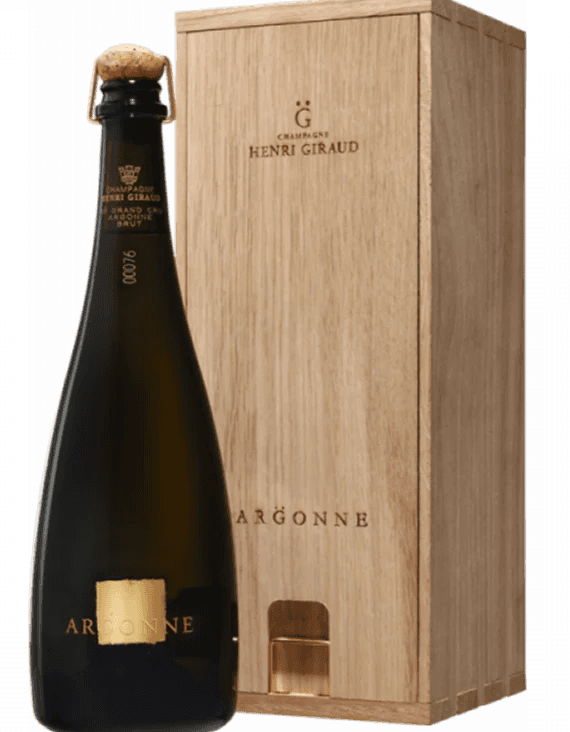
Henri Giraud Argonne Champagne
Long-term Aging Potential
High-end vintage champagne possesses long-term aging capabilities that rival top red wines. Under proper storage conditions, its flavors can further improve over time, increasing its market value. According to reports from the international wine trading market Liv-ex, some rare brands, such as Henri Giraud, have achieved remarkable market performance due to their exceptional quality and brand strength, even with limited production. For instance, its Argonne series has not only received high praise from wine critics but has also become a target for collectors due to its aging potential.
Brand Influence
Well-known brands such as Dom Pérignon, Krug, and Louis Roederer not only represent quality assurance but have also become coveted treasures for collectors due to their history and reputation.
Recommended Product: Canard Duchene Champagne Vintage 2015
The latest launch from Wine Passions, the 【2015 Vintage Champagne】 Canard Duchene Champagne Vintage 2015, has become a focus in the market due to its outstanding quality and charming flavors. This champagne is praised for its "elegance under high temperatures," showcasing the unique charm of the 2015 vintage, with a price of only HK$438.00, making it a boutique champagne with both collectible value and high cost-effectiveness.
Canard Duchene Champagne Vintage 2015 presents an elegant pale gold color, visually fresh and extraordinary, fully reflecting the maturity of the 2015 vintage grapes. This enchanting hue comes from carefully selected Chardonnay, Pinot Noir, and Pinot Meunier grapes, crafted using the traditional champagne method (Méthode Champenoise).
In terms of aroma, this champagne features a prominent citrus note, with the fresh scents of lemon and bergamot providing a refreshing feeling, complemented by the rich aroma of apricot, adding depth. On the palate, the initial taste is of a refreshing lemoniness, followed by the gradual emergence of bergamot aroma, delivering a fresh and balanced mouthfeel. This delicate structure and lasting finish leaves a lasting impression.
In addition to its outstanding flavor performance, Canard Duchene Champagne Vintage 2015 also has excellent pairing potential. It pairs well with seafood such as scallops, oysters, or lobster, and can also form a perfect combination with desserts like orange cake or cream tarts. Whether for celebratory occasions or formal banquets, it adds a touch of luxury to the dining table.
Acquiring this high-quality vintage champagne at HK$438.00 is not only a sensory pleasure but also a worthwhile investment option. Its scarcity, good aging potential, and outstanding brand reputation make it a treasure in the eyes of collectors and champagne enthusiasts. If you are looking for a champagne that can elevate the atmosphere of your gatherings while reflecting personal taste, then Canard Duchene Champagne Vintage 2015 is definitely a choice not to be missed!
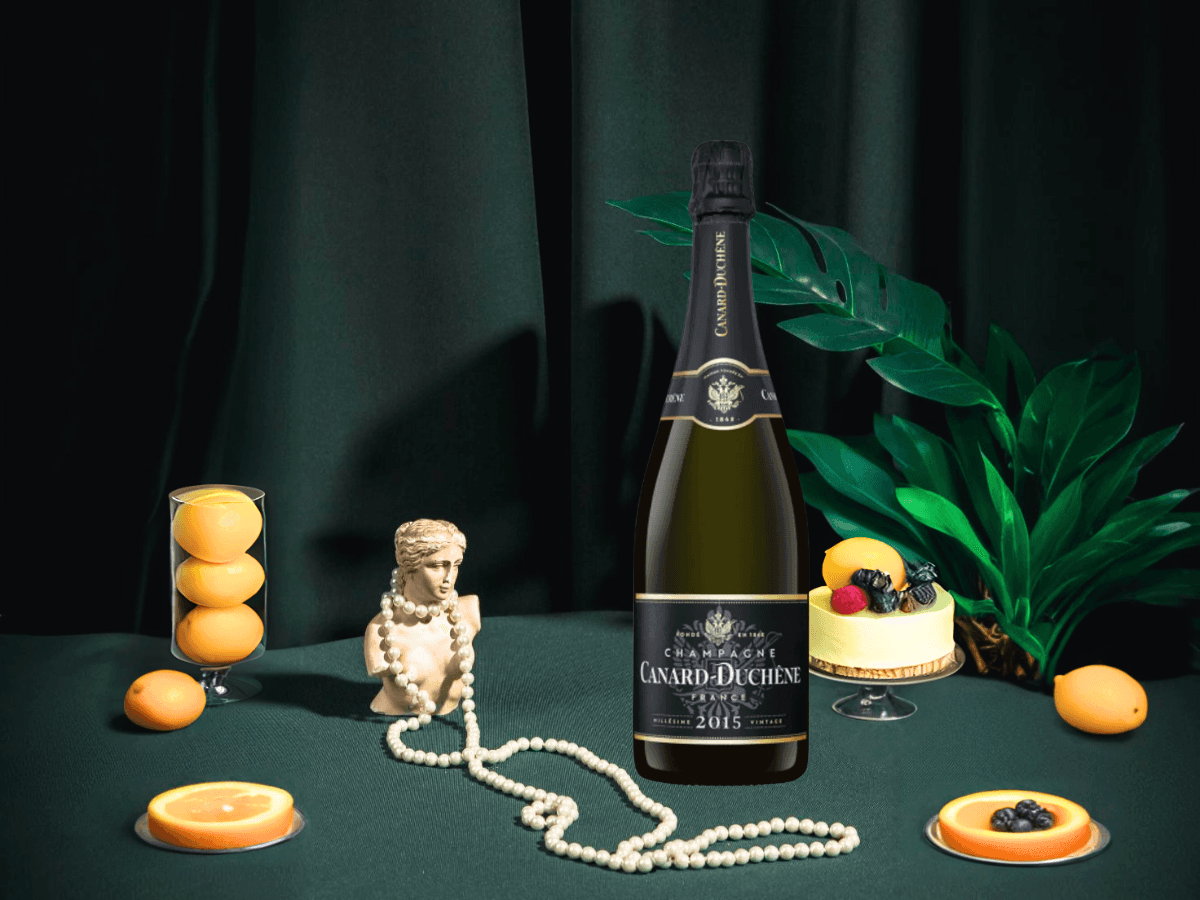
Elegance Under High Temperatures: The Story and Investment Value of Aged ChampagneElegance Under High Temperatures: The Story and Investment Value of Aged Champagne
父親節送禮的技巧在於瞭解父親的興趣和需求,並結合實用性與情感價值,選擇既能觸動心弦又具品味的禮物。
送禮時應考慮父親的生活習慣、喜好及個性,並根據預算挑選品質優良且包裝精美的產品,讓禮物不僅是物質的呈現,更是心意的傳達。
以下父親節禮物推薦涵蓋茶葉、鋼筆、葡萄酒、酒器及時尚配飾,既實用又富有紀念意義,適合不同類型的父親。
1. 優質高山茶葉禮盒
茶葉是亞洲文化中深受喜愛的健康飲品,優質的高山茶口感清新甘醇,且富含抗氧化物質,適合注重健康與品味的父親。
產品特色
精選臺灣或中國大陸高山茶,採用手工採摘及傳統製茶工藝,保留茶葉原始香氣與甘甜口感。包裝通常採用精美禮盒設計,方便收藏與贈送。
適合人群
喜歡靜心品茗、注重養生的父親。此類禮盒方便沖泡,適合日常飲用與招待賓客。
推薦例子:臺灣高山茶雙罐禮盒 HK$1,620
此款禮盒包含兩罐各150克的臺灣高山茶,茶葉來自知名產區如阿裏山、杉林溪等,茶香清新甘醇,包裝簡約大氣,附贈提袋與沖泡說明,適合喜歡品茗且注重健康的父親。

2. 經典鋼筆
鋼筆不僅是書寫工具,更是身份與品味的象徵。選擇一支工藝精良、設計典雅的鋼筆,能體現對父親的尊重與感謝。
產品特色
採用優質樹脂或金屬筆身,搭配手工打造的筆尖,書寫流暢且耐用。設計風格沉穩大方,適合商務或日常使用。
適合人群
經常書寫、注重生活品味的父親。鋼筆亦可選擇刻字服務,增添個人化紀念意義。
推薦例子:LAMY Safari 狩獵者系列鋼筆 HK$1,480
此款鋼筆以實惠價格和優良品質著稱,筆尖書寫流暢,筆身輕巧耐用,適合日常書寫及送禮。且有多種顏色選擇,適合注重實用與品味的父親。部分商家亦提供刻字服務,增添個人化紀念意義。
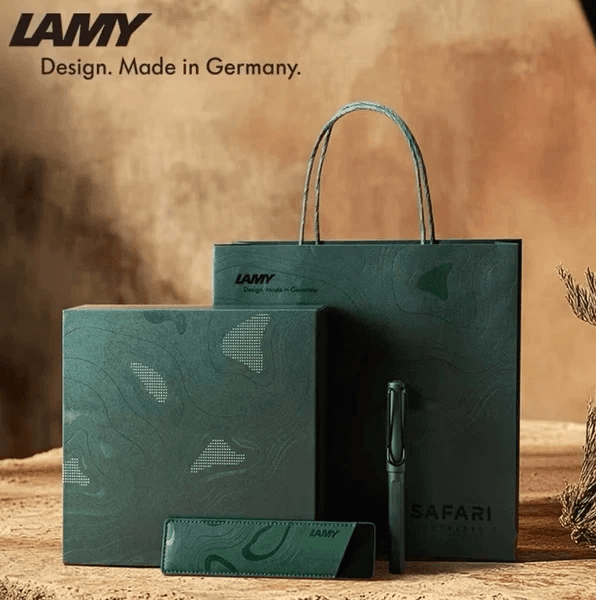
3. 精選葡萄酒—父親節的品味之選
紅酒套裝是父親節禮物中極具特色的一環,不僅代表品味與格調,更蘊含著時間與傳承的深意。精選來自意大利皮埃蒙特地區的Braida酒莊Barbera系列,酒款結構均衡、單寧豐富,既適合即時品飲,也具陳年潛力。此套裝更特別配備由香港品酒師協會設計的Lucaris Desire Robust紅酒杯及金裝開酒刀,細節處處體現用心。
產品亮點
多款經典酒款組合:涵蓋不同年份與風格,滿足不同品味需求。
精緻配套:專業紅酒杯及開酒刀,提升飲酒體驗,讓品酒過程更具儀式感。
父子傳承故事:Braida酒莊的創辦人Giuseppe Bologna 本身是一位車夫,同時熱愛釀造Barbera 葡萄酒,其子 Giacomo Bologna 不僅繼承了父親的葡萄園,更繼承了父親對土地和葡萄的熱情, Barbera背後的父子情誼與父親節的主題相得益彰,增添禮物的情感深度。
適合人群
熱愛品酒、收藏葡萄酒,或希望在父親節以別具意義的方式表達敬意的子女。
套裝內容:
百來達 Grignolino︱Grignolino d'Asti DOC 2011
百來達微氣泡紅酒 Barbera︱La Monella Barbera del Monferrato Frizzante DOC 2018
百來達 Barbera︱Bricco Uccellone Barbera d'Asti DOCG 2008
【香港品酒師協會設計】Lucaris Desire Robust Red 五旋紋紅酒杯套裝 (2隻)
【金裝開酒刀】 連皮套 X1
適合人群
喜歡品酒或收藏葡萄酒的父親。
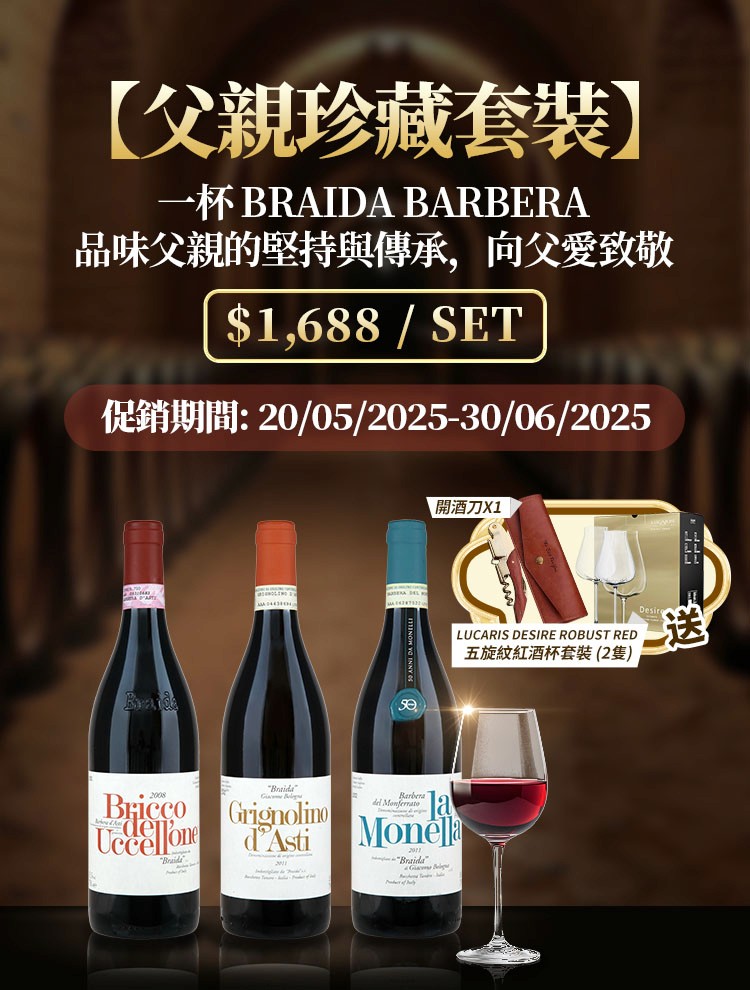
4. 設計感酒器套裝
對於喜愛品酒的父親,一套設計獨特且實用的酒器能提升飲酒體驗。
產品特色
玻璃材質手工吹製,外觀通透且堅固,設計簡約時尚,適合紅酒、威士卡或啤酒使用。套裝通常包含醒酒器、酒杯等,方便品酒時使用。
適合人群
喜歡在家享受品酒時光的父親,亦可作為家中裝飾品,增添生活品味。
推薦例子:嘉寶玻璃手工吹製醒酒器套裝 約HK$1,500
這類醒酒器多為手工吹製水晶玻璃,設計古典且具有歐洲高端風格,容量約900ml至1500ml不等,適合紅酒及威士忌使用。部分款式帶有手工雕刻圖案,既實用又可作為家居裝飾。

5. 時尚領呔
領呔或絲巾是提升男士正式造型的關鍵配件,適合經常出席正式場合或注重形象的父親。
產品特色
採用高質感絲綢或羊毛材質,設計簡約大方,色彩沉穩,易於搭配各種西裝或襯衫。部分產品可提供定制刺繡服務,增加禮物的獨特性。
適合人群
喜歡打扮、注重形象的父親,尤其適合商務人士。
推薦例子:Thom Browne 斜間絲質領呔 HK$1,533
選用高質感絲綢材質,色彩沉穩如深藍、酒紅或灰色,設計簡約大方,適合商務場合佩戴,提升父親的整體形象與氣質。可於多個網購平臺輕鬆入手。
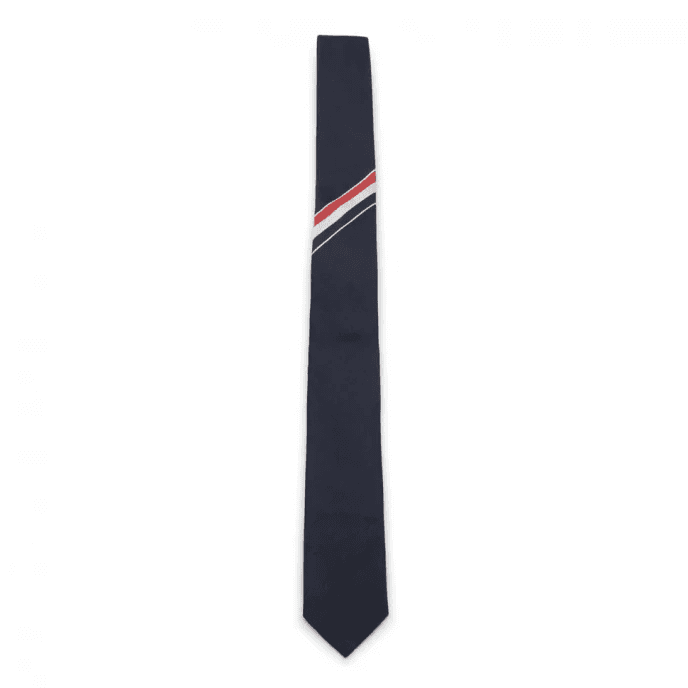
父親節禮物的選擇應兼顧實用性與品味,讓禮物成為情感的載體。當中,紅酒套裝可以展現對父親品味的尊重,無形中加深親子情誼,透過這份用心,讓父親節更添溫馨與意義,令父親感受到子女的深情厚意。
此外,優質高山茶葉禮盒以其清新甘醇和健康養生的特質,適合注重生活質素的父親;經典鋼筆則展現書寫的優雅與身份象徵,適合重視品味與實用的父親;設計感酒器套裝不但提升品酒樂趣,亦為家居添上藝術氣息;時尚領呔則是提升男士正式造型的細節之選,為父親形象加分。
這些多元化的禮物選擇,均能根據不同父親的喜好與生活方式,傳達子女的心意與敬意,透過用心挑選的禮品,讓今年的父親節更添溫暖與深意,讓爸爸感受到最真摯的關懷與愛意。
Elegance Under High Temperatures: The Story and Investment Value of Aged ChampagneElegance Under High Temperatures: The Story and Investment Value of Aged Champagne
For wine lovers in Hong Kong, French wine has always been an indispensable choice on the table, and among the many French regions, Côtes-du-Rhône Villages is a place worth delving into. This region is located in the southern Rhône Valley of France and is highly regarded for its superior geographical conditions, unique winemaking style, and high cost-performance ratio. This article will detail the characteristics of Côtes-du-Rhône Villages for Hong Kong readers and explore its uniqueness compared to other regions.
Geographical and Climatic Advantages of Côtes-du-Rhône Villages
Côtes-du-Rhône Villages is situated in the southern Rhône Valley of France, encompassing 95 villages, 22 of which can label their village names on the wine label due to higher quality standards (such as Cairanne, Rasteau, and Séguret). These villages are distributed on both sides of the Rhône River valley, featuring varied terrain, including hills, terraces, and alluvial plains.
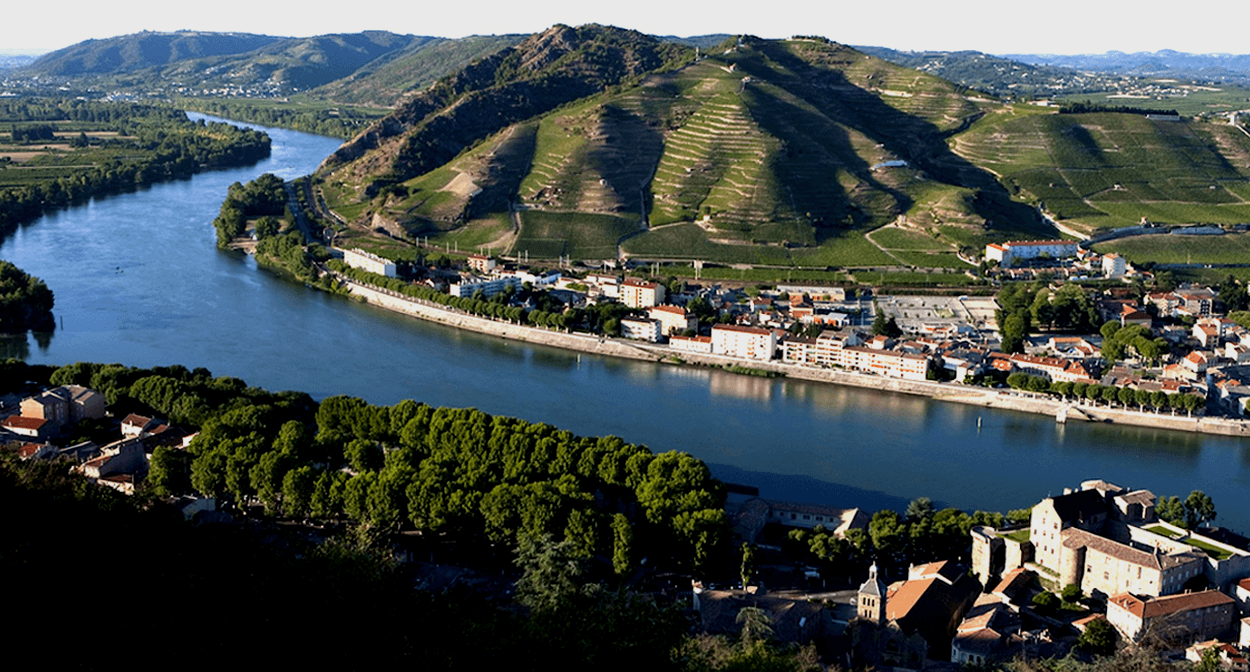
Geographical Conditions
Diverse Soils: The local soil structure includes limestone clay, sandy soil, and gravel, which helps the vine roots penetrate deeply to absorb minerals, imparting richer flavor layers to the wine.
Altitude: Some vineyards are located in high-altitude areas, where the temperature difference between day and night helps to maintain the acidity and balance of the grapes.
Climatic Conditions
Mediterranean Climate: Hot and dry in summer, with mild and less rainy winters, which is very suitable for grape ripening.
Mistral Wind: This strong wind helps keep the vineyards dry, reduces the risk of disease, and promotes healthy growth of the grape clusters.
These blessed natural conditions give the wines of Côtes-du-Rhône Villages a rich fruit aroma, good structure, and balance.
Winemaking Regulations and Main Varieties
The winemaking regulations of Côtes-du-Rhône Villages are stricter than those of ordinary Côtes-du-Rhône to ensure that each bottle meets high-quality standards.
Red Wines
Main Varieties: Grenache, Syrah, and Mourvèdre.
Blend Ratio: These three main varieties must account for at least 66% of the total blend, with Grenache typically being the dominant variety.
Tasting Characteristics: Rich aromas of red fruits such as black cherry and raspberry, accompanied by spices, herbal notes, and mineral flavors. The tannin structure is moderate with aging potential.
White Wines and Rosé
White grape varieties include Grenache Blanc, Marsanne, and Roussanne, producing white wines that are fragrant with floral notes and a refreshing palate.
The rosé is known for its balance of fruitiness and acidity, making it an excellent choice for a refreshing summer drink.
Strict Regulations
The production regulations of Côtes-du-Rhône Villages cover every detail from grape cultivation to the winemaking process, such as:
Yield limits per hectare to ensure quality.
Must pass official tasting tests to obtain AOC certification.
Historical Heritage and Cultural Background
The winemaking history of Côtes-du-Rhône Villages dates back to ancient Roman times. The Romans introduced winemaking techniques to the Rhône Valley, and during the medieval period, monasteries further developed local grape cultivation techniques. However, the phylloxera plague in the late 19th century nearly devastated the entire region. Fortunately, in the early 20th century, the tireless efforts of local winemakers rejuvenated this land.
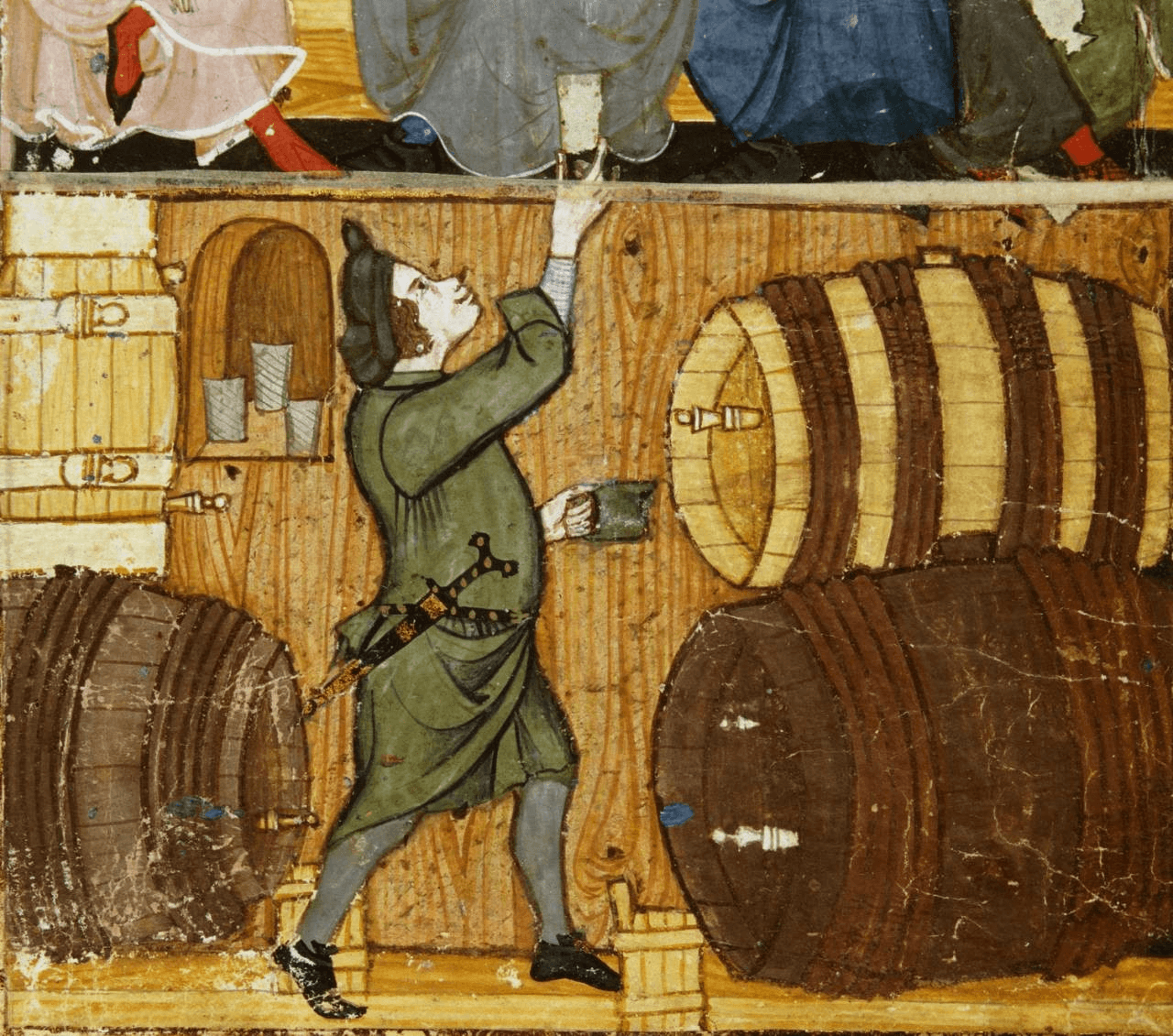
In 1967, Côtes-du-Rhône Villages officially received AOC (Appellation d'Origine Contrôlée) certification, after which 22 villages were allowed to label their village names on the wine label due to outstanding quality. For example:
Cairanne: Known for its rich and balanced red wines.
Rasteau: Specializes in producing sweet fortified wines.
Sablet: Produces red and white wines with rich fruit aromas and delicate structure.
Comparison with Other Regions: Uniqueness of Côtes-du-Rhône Villages
Here is a comparison of Côtes-du-Rhône Villages with other renowned French regions such as Châteauneuf-du-Pape and Beaujolais:
Characteristics Côtes-du-Rhône Villages Châteauneuf-du-Pape Beaujolais Main Varieties Grenache, Syrah, Mourvèdre Grenache, Mourvèdre, Syrah Gamay Price Positioning Mid-range price, high cost-performance entry to mid-tier in the high-end market Tasting Characteristics Rich fruit aroma, herbal notes, moderate tannin full-bodied and complex, multilayered light and aromatic, focused on red fruits Aging Potential 5-10 years over 10 years most are suitable for immediate drinking Market Recognition High cost-performance but slightly lower recognition highly recognized, regarded as a top region widely recognized, but most styles are lighter.
In comparison, Côtes-du-Rhône Villages offers a more affordable yet equally high-quality choice, making it perfect for everyday dining or gatherings.

The winemaking history of Côtes-du-Rhône Villages dates back to ancient Roman times. The Romans brought winemaking techniques to the Rhône Valley, and during the Middle Ages, monasteries further developed local grape cultivation methods. However, the phylloxera disaster in the late 19th century nearly destroyed the entire region. Fortunately, in the early 20th century, the tireless efforts of local winemakers revitalized this land.
Why should people in Hong Kong pay attention to Côtes-du-Rhône Villages?
Great value for money
Compared to high-end regions like Châteauneuf-du-Pape, Côtes-du-Rhône Villages offers a more affordable yet high-quality option, making it a top choice for family gatherings or get-togethers with friends.Diverse flavors
Whether paired with Cantonese barbecue dishes or spicy hot pot, its rich fruit aromas and balanced structure can blend perfectly. Additionally, its refreshing white and rosé wines are also very suitable for pairing with seafood or salads commonly found in Hong Kong.Environmental friendliness and sustainability
Many local wineries practice organic or biodynamic cultivation, aligning better with modern consumers' demands for environmentally friendly and healthy eating.Both aging potential and drinkability
The red wines of Côtes-du-Rhône Villages can be enjoyed young while also possessing aging potential, making them very versatile.
How to purchase and taste?
In the Hong Kong market, quality wines from Côtes-du-Rhône Villages can be found through specialized wine shops or online platforms. For example:
Chateau Maucoil Cotes-du-Rhone Villages 2020 (HK$140): Rich in fruit flavors and reasonably priced, it's perfect as an everyday table wine.
Domaine Alary Cairanne 2021: Hailing from the village of Cairanne, known for its balanced and elegant style, it’s a great choice for gatherings or as a gift.
Recommended wine: Chateau Maucoil Cotes-du-Rhone Villages 2020
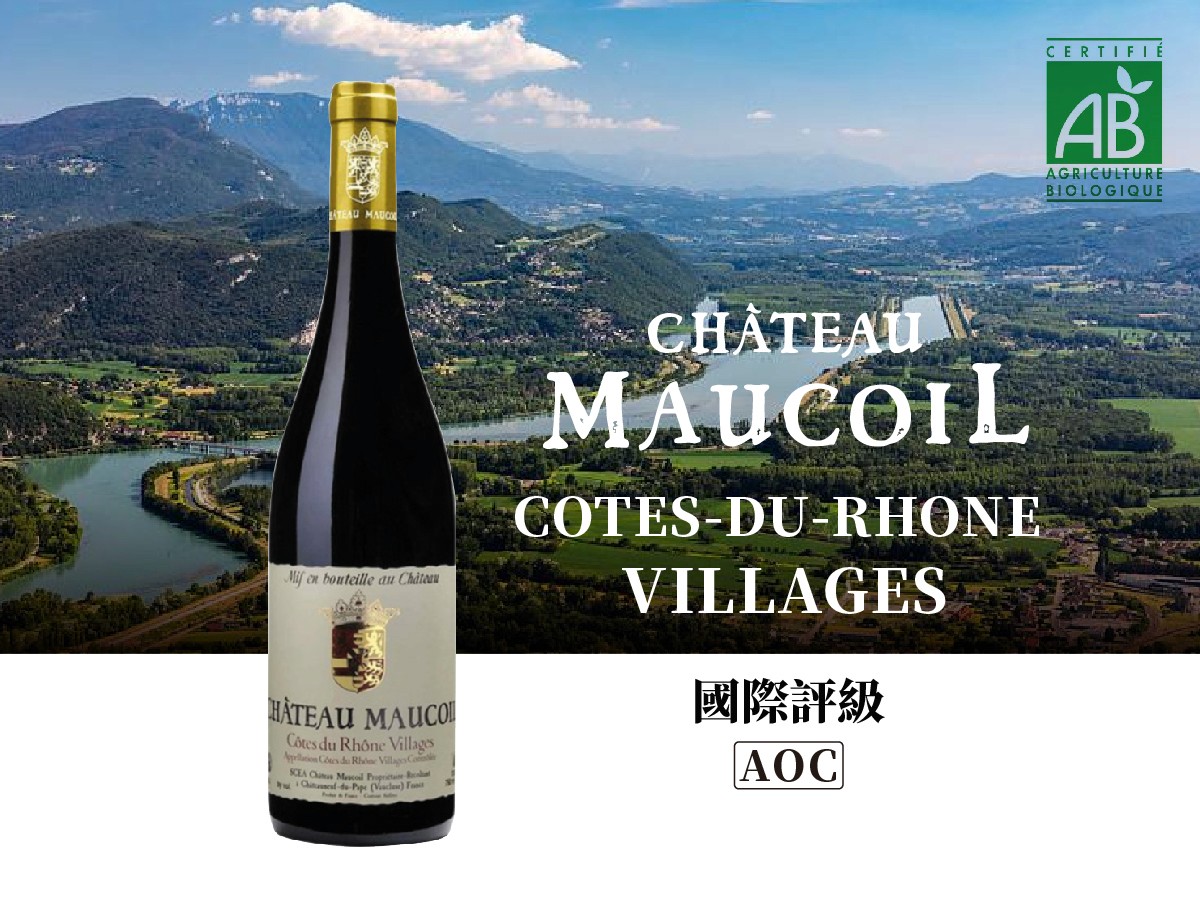
Background of the wine
Chateau Maucoil is a winery with a long history that values environmental principles, using organic farming to manage its 45 hectares of vineyards since 2011. Located in the Southern Rhône Valley, its traditional farming methods and respect for the natural environment imbue each bottle with local terroir characteristics.
Blend of grape varieties
This wine is blended from three main grape varieties:
Grenache: Provides rich fruit aromas and a smooth mouthfeel.
Syrah: Adds spice notes and structure.
Carignane: Offers depth and tannic layers, enhancing overall balance.
Tasting notes
Color: Deep ruby red, visually bright and inviting, classic style of Rhône red wines.
Aroma: Rich layers with delicate hints of black fruits, black cherries, cocoa, thyme, and wild mint.
Palate: Rich fruit flavor, bright entry, with fresh acidity and solid tannins. Good concentration and stable structure. Long and lingering finish, with fruit flavors and herbal freshness that is satisfying at the end.
Serving temperature and aeration time: Best enjoyed at 16°C to 18°C, with 30 minutes of aeration to release optimal aromas.
Food pairing suggestions
Chateau Maucoil Cotes-du-Rhone Villages 2020 pairs wonderfully with the following dishes:
Grilled red meats, such as steaks and lamb chops.
Mediterranean dishes, like tomato sauce pasta or roasted vegetables.
Cantonese dishes such as roasted goose or honey-glazed char siu.
Conclusion
Côtes-du-Rhône Villages is a region that embodies both historical heritage and modern innovation, with its diverse flavors, high value for money, and commitment to environmental sustainability, making it a gem not to be missed by wine lovers in Hong Kong. Consider these fine wines from the small villages of the Southern Rhône Valley during your next purchase, and enrich your dining experience!
Elegance Under High Temperatures: The Story and Investment Value of Aged ChampagneElegance Under High Temperatures: The Story and Investment Value of Aged Champagne
History and Stories
Gavi, a white wine from the Piedmont region of Italy, is known for its long history and romantic legends. It is said that the name Gavi comes from the story of the French princess Gavia. In the late 6th century, the princess chose to elope with her beloved knight to escape the pursuit of her father, King Clodomiro, and found refuge in a small town in Piedmont.
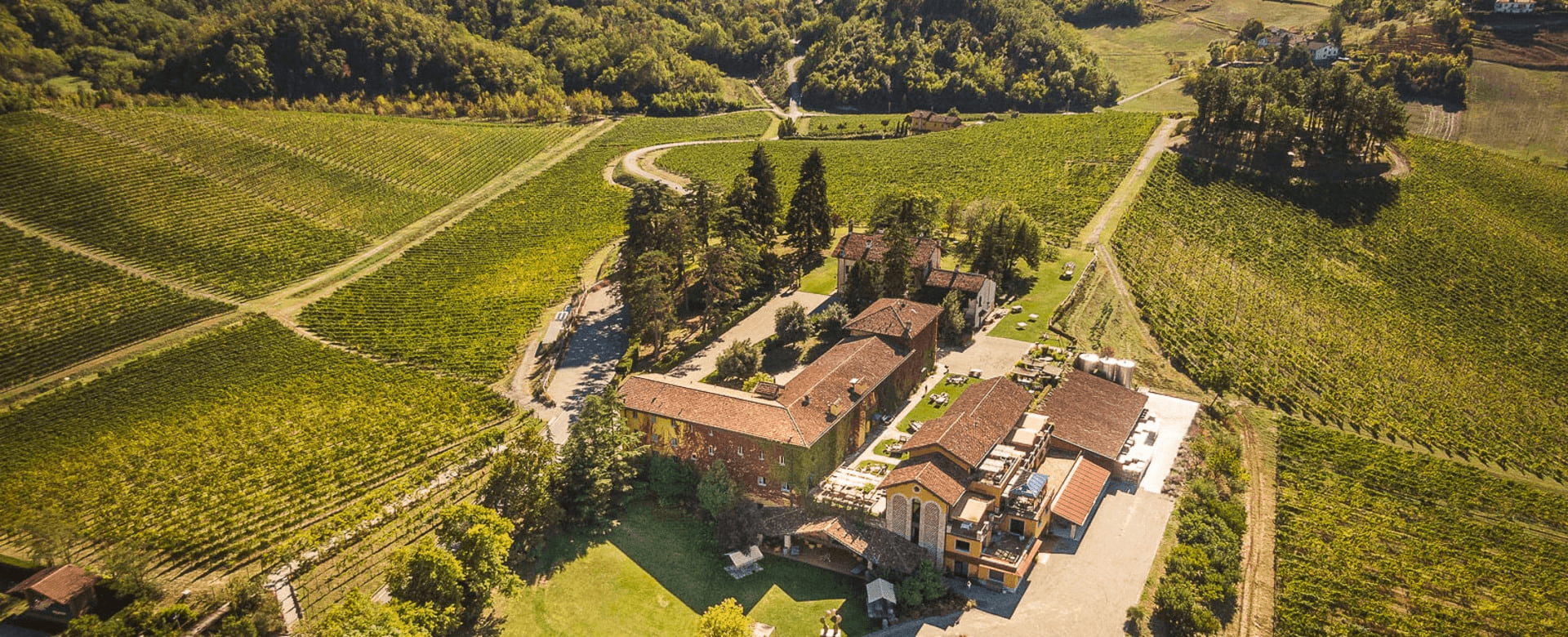
Gavia built a home in the area and established friendly relations with the villagers. She ruled the town for many years, bringing peace and prosperity with her wisdom and leadership. Legend has it that she was buried under a marble altar at the entrance of the castle, where a coat of arms symbolizing the power that once ruled the village is engraved. These coats of arms may pay tribute to this strong princess who shaped the village of Gavi and left behind a romantic and inspiring legacy for future generations. In honor of her courage and kindness, the town was named Gavi, and this land later became the core area for Cortese grape cultivation.
The cultivation history of Cortese grapes in Italy can be traced back to the 17th century and was first recorded at noble banquets in the 18th century. By the mid-20th century, Gavi began to rise to fame as a white wine. In 1974, it received DOC (Denomination of Controlled Origin) certification, and in 1998 it was upgraded to DOCG (Denomination of Controlled Origin and Guarantee) status, becoming one of Italy's first internationally renowned white wines.
What Makes Gavi Unique
What makes Gavi so special lies in its core ingredient—Cortese grapes. These grapes are characterized by their thin skin and high acidity, making them well-suited to grow in the warm and sunny climate of Piedmont. These conditions give Gavi a bone-dry, crisp, and lively flavor, with complex layers of lemon, green apple, honeydew, and almond.
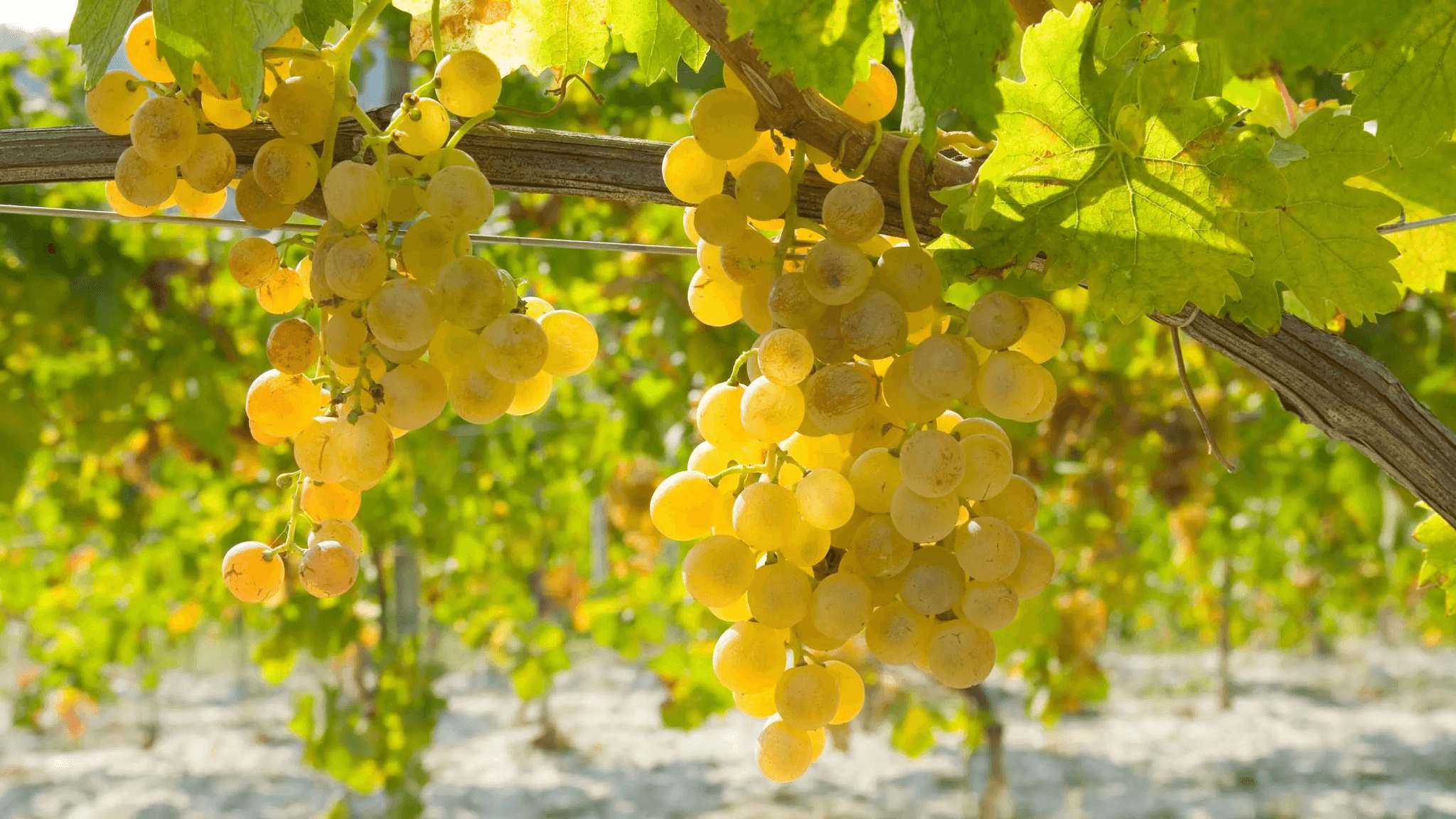
Moreover, Gavi is renowned for its diverse styles, including still white wine, sparkling wine, and classic method sparkling wine. Some high-quality Gavis even have excellent aging potential, developing aromas of honey, nuts, and even petroleum in the bottle. These variations make Gavi not only suitable for everyday drinking but also meet the demand for premium white wines.
It’s also worth mentioning that the soil environment where Gavi grows is diverse, including limestone, mineral-rich alluvial clay, and gravelly soils. Each type of soil imparts different flavor characteristics to the grapes, making every bottle of Gavi unique.
Reasons for Popularity
For white wine enthusiasts in Hong Kong, Gavi is undoubtedly an ideal choice, perfectly matching the fresh and crisp palate with Asian culinary culture. Whether paired with seafood, light appetizers, or herbaceous-flavored pasta, Gavi showcases excellent food pairing capabilities.
Additionally, Gavi is reasonably priced but of high quality, with most wines on the market being relatively affordable, making it a cost-effective choice for everyday dining. Coupled with its similarities to renowned white wines such as Chablis or Sauvignon Blanc, those who enjoy fresh white wines are likely to fall in love with it.
Finally, as the Piedmont region is committed to promoting this white wine through events like international wine tastings and masterclasses, more people are becoming aware of Gavi's charm. With 85% of its production exported to international markets, this classic Italian white wine is making its way around the globe.
San Silvestro Gavi del Comune di Gavi Fossili DOCG 2023 is a classic white wine that blends traditional craftsmanship, unique terroir, and modern concepts. Whether as a delicious companion on the everyday dining table or a fine selection for important occasions, it can conquer every wine taster with its fresh and complex flavors. If you are a white wine enthusiast from Hong Kong, you should personally experience the extraordinary charm that this exquisite white wine has to offer!
San Silvestro Gavi del Comune di Gavi Fossili DOCG 2023: The Most Precious White Wine Experience
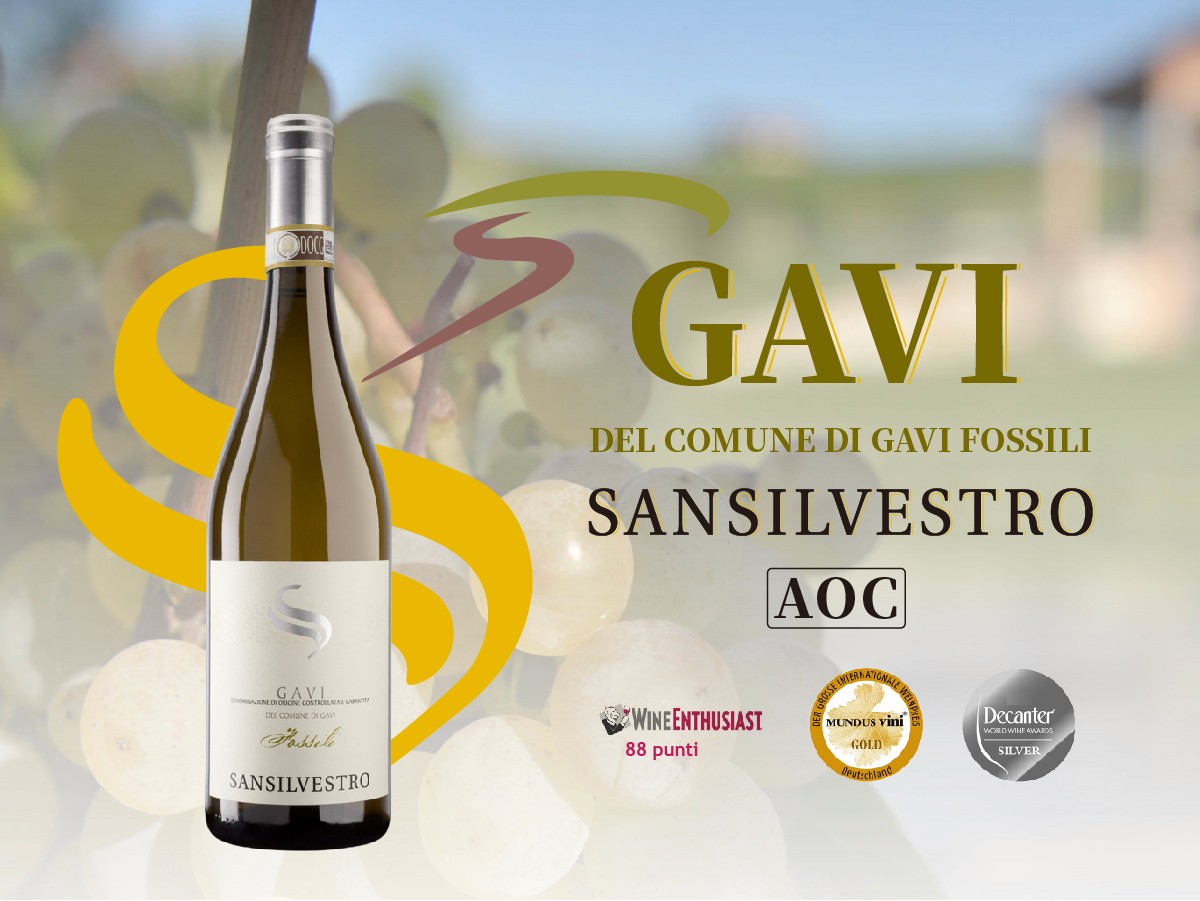
San Silvestro Gavi del Comune di Gavi Fossili DOCG 2023 is a top-tier white wine from the Piedmont region of Italy, known for its rich flavor profile, exceptional winemaking craft, and commitment to sustainability. Here are some unique selling points of this wine that make it a must-try for anyone:
1. Unique Terroir and Grape Variety
The core of San Silvestro Gavi Fossili lies in its unique terroir conditions and the Cortese grape variety:
Geographical Location and Soil: The grapes for this wine come from the Gavi hills near the Ligurian Sea, where the soil is rich in limestone and fossils, providing an excellent mineral foundation for the grapes. This special soil imparts a rich mineral character and fresh flavors to Gavi wine.
Cortese Grape: Cortese is a high-acidity, thin-skinned white grape variety, particularly well-suited to grow in the warm and sunny climate of the Piedmont region. This results in classic flavors of lemon, green apple, and almond, with subtle floral aromas and spicy notes.
2. Superb Winemaking Craft
San Silvestro winery is renowned for its blend of traditional and modern winemaking techniques:
Temperature-Controlled Fermentation: The grapes are fermented under precise temperature control at 18 to 20°C, ensuring a perfect balance of fruitiness and acidity.
Aging Process: The wine is kept in stainless steel tanks in contact with fine lees for six months, adding texture and complexity to the body.
Family Heritage: San Silvestro winery was founded in 1871 and has been run by the family for four generations. They adhere to sustainability principles, earning Equalitas certification and are committed to environmentally friendly grape growing practices.
3. Unique Flavor and Versatile Pairings
San Silvestro Gavi Fossili is famous for its fresh and complex flavors:
Flavor Profile: This wine showcases lemon, green apple, floral notes, and a hint of spice, accompanied by a pronounced mineral character and a typical bitter almond finish.
Balanced Structure: It is clean and well-balanced on the palate, with lively acidity that is not harsh, resulting in a long, pleasant aftertaste.
Food Pairings: This wine pairs excellently with seafood (such as oysters and sushi), light pasta dishes, and dishes with creamy sauces or spicy seasonings.
4. High Value and International Reputation
Despite its outstanding quality, San Silvestro Gavi Fossili is relatively affordable, making it an excellent choice for white wine enthusiasts looking for value. Moreover, the brand has successfully expanded into international markets, with products that have received global recognition, making it a prized selection for wine lovers around the world.
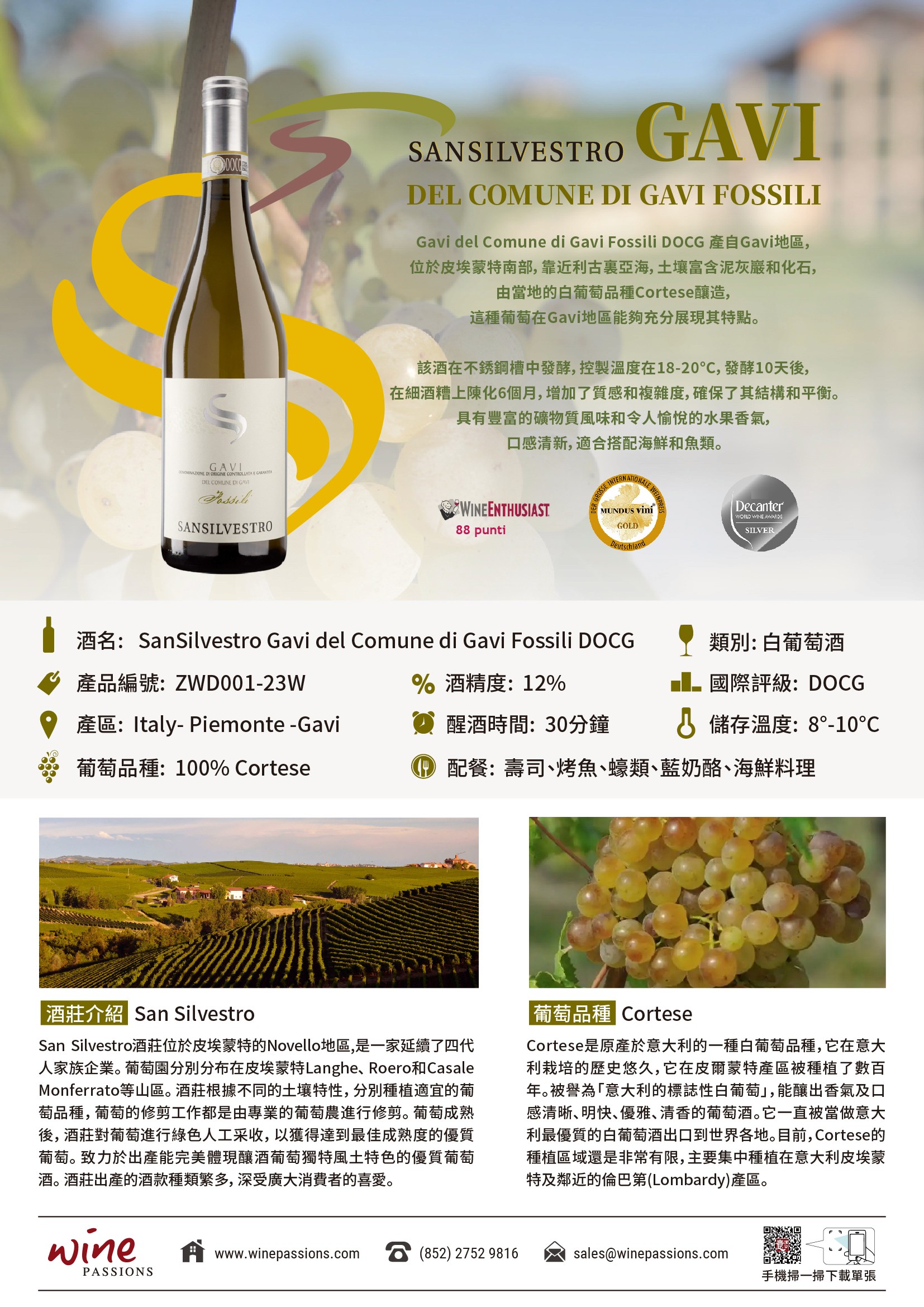
Conclusion
San Silvestro Gavi del Comune di Gavi Fossili DOCG 2023 is a classic white wine that blends traditional craftsmanship, unique terroir, and modern ideals. Whether as a delightful companion on the everyday dining table or a fine choice for special occasions, it will captivate every wine taster with its fresh and complex flavors. If you are a white wine enthusiast in Hong Kong, do experience the extraordinary charm of this precious white wine for yourself!
